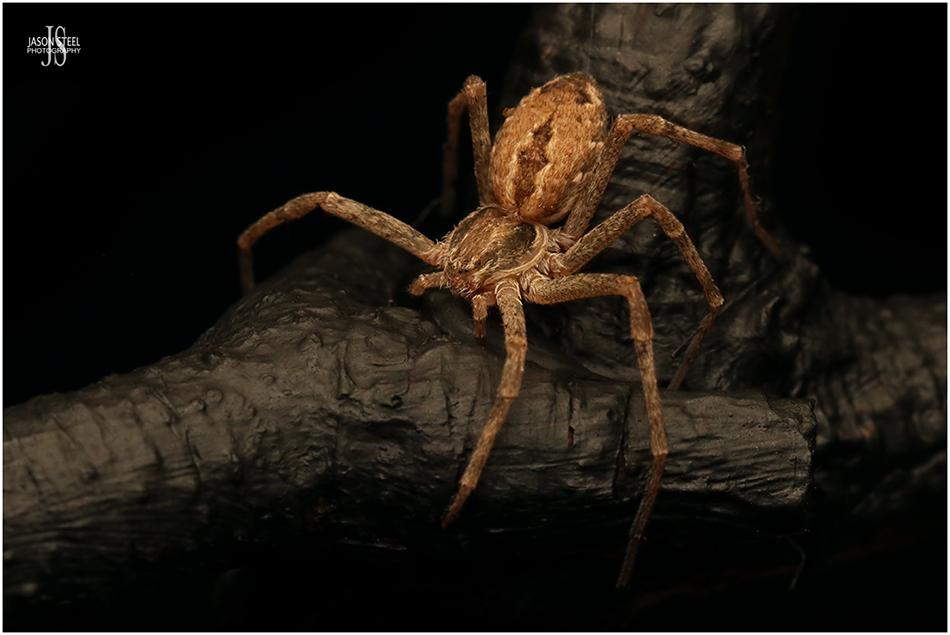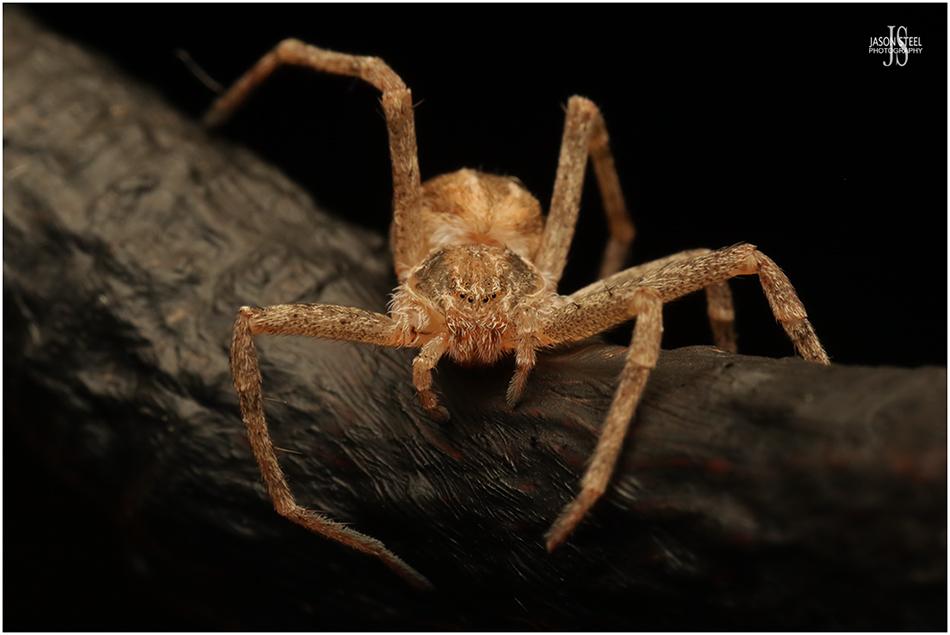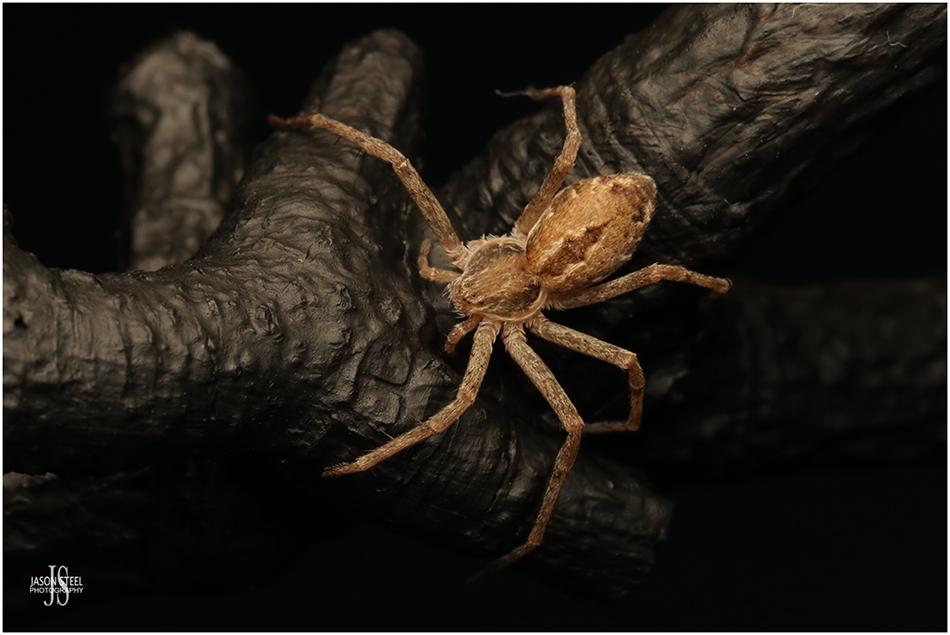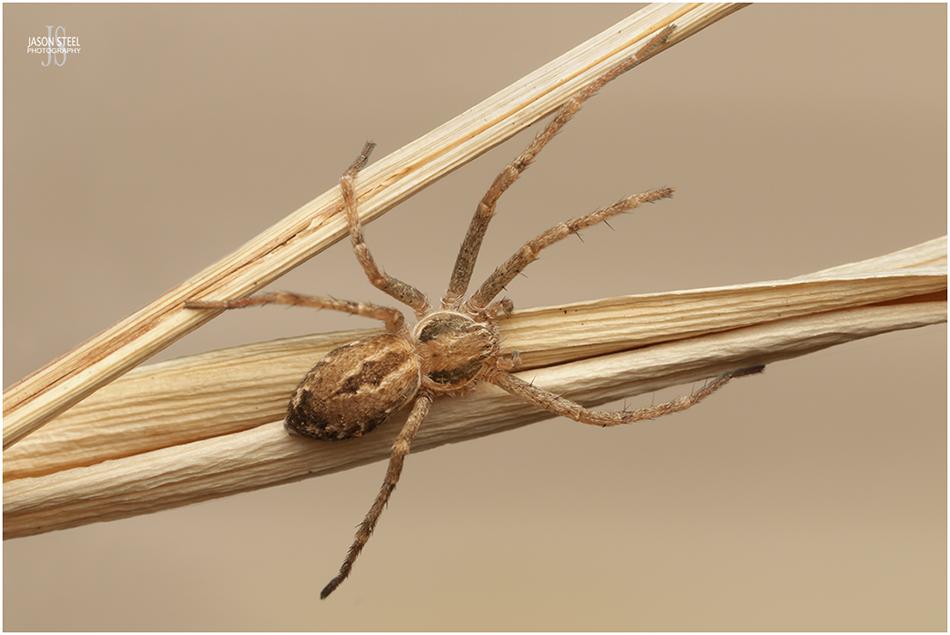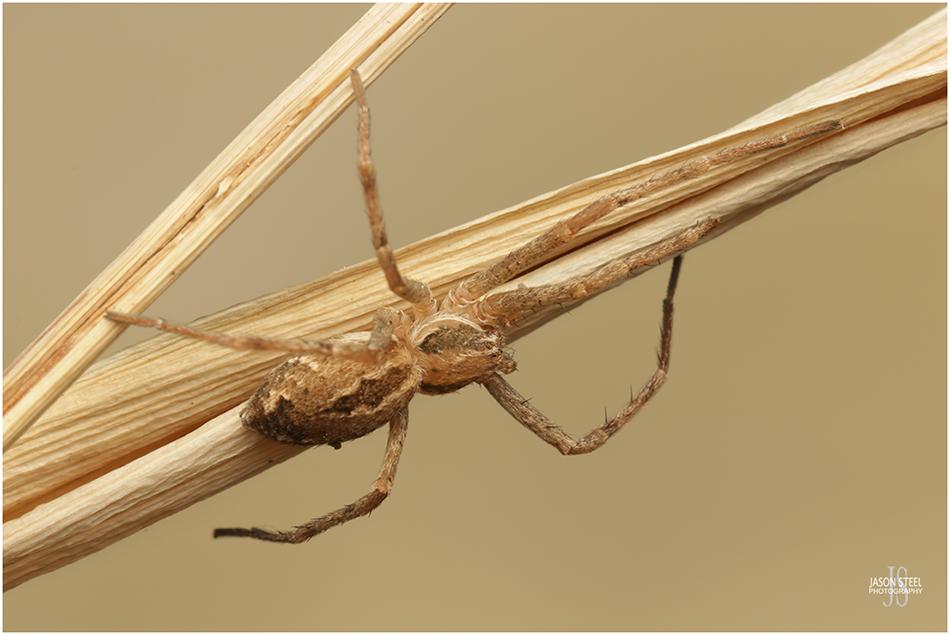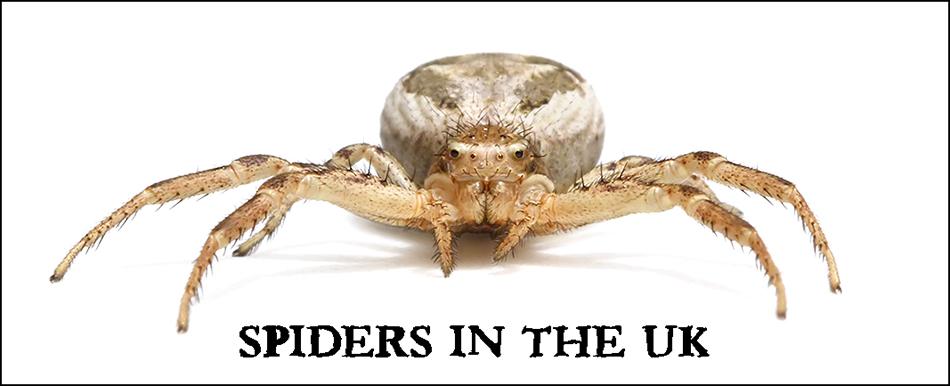
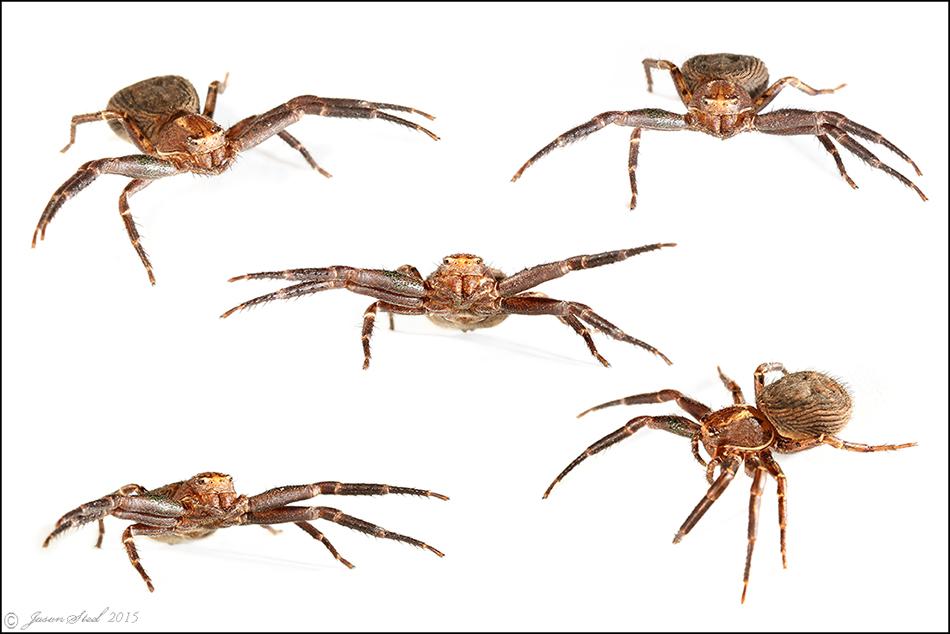
Crab Spider (family Thompisidae)
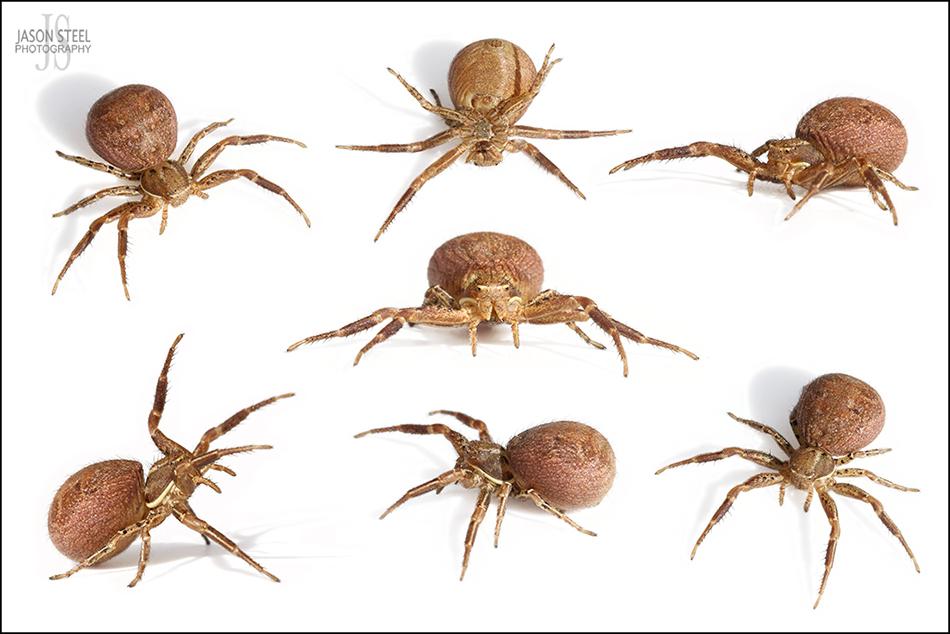
Female Common Crab Spider - Xysticus cf cristatus
Common Crab Spider (Xysticus cristatus)
The Common Crab Spider is found in low vegetation and in leaf litter in a variety of habitats across the UK. Females reach a body-length of around 8mm whilst males are smaller at 5mm. May and June are the peak months for this species although they can be found from March to October. Some specimens have even been found in February and December. Xysticus cristatus is very similar in appearance to Xysticus ulmi, however Xysticus ulmi lacks the sharp dark point at the end of the triangle on the carapace.
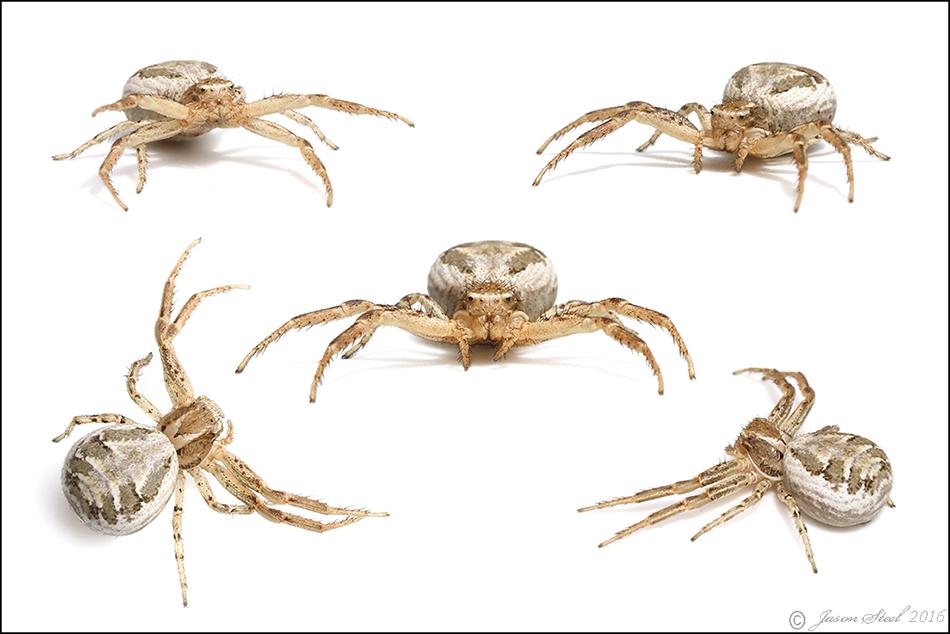
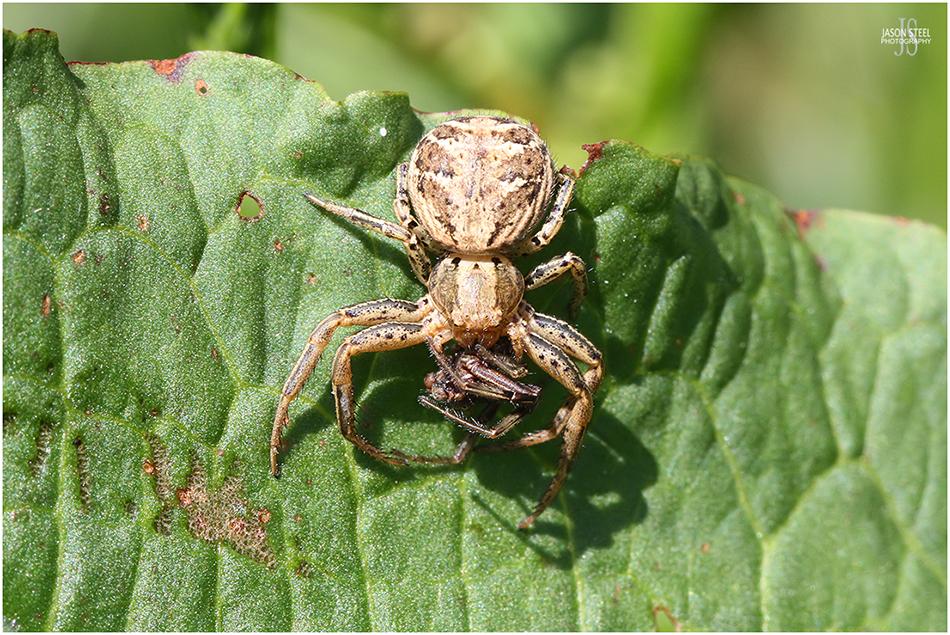
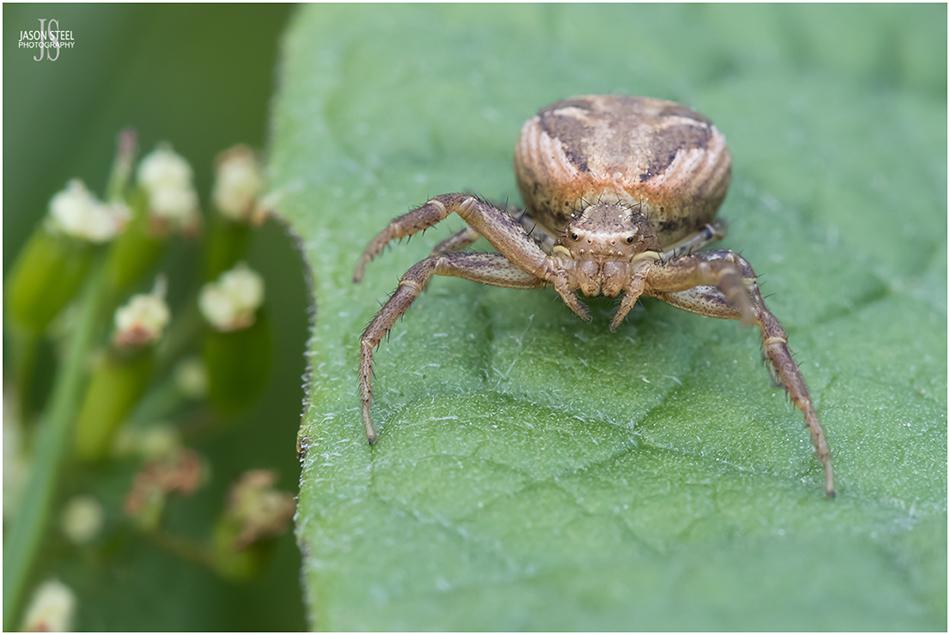
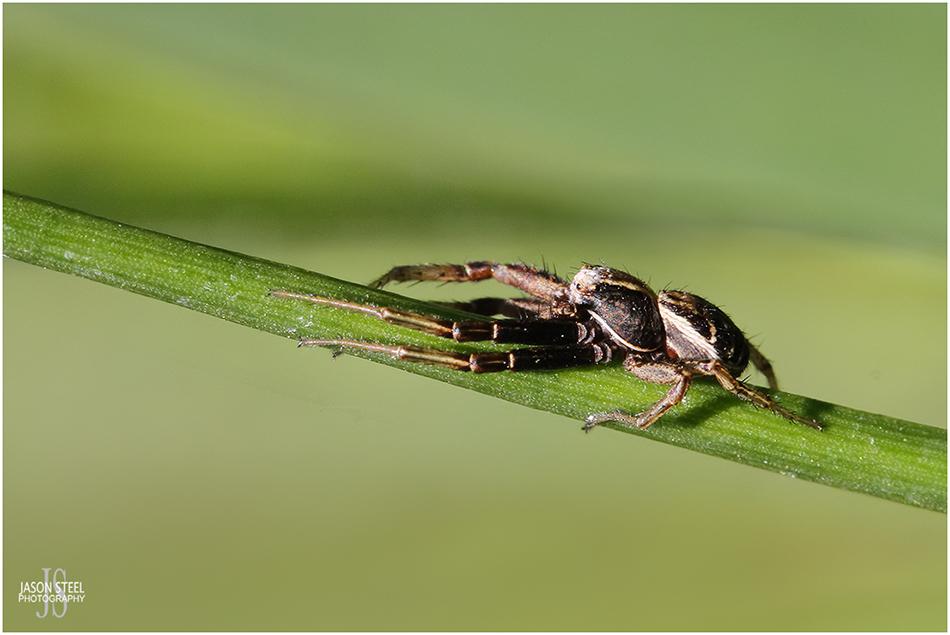
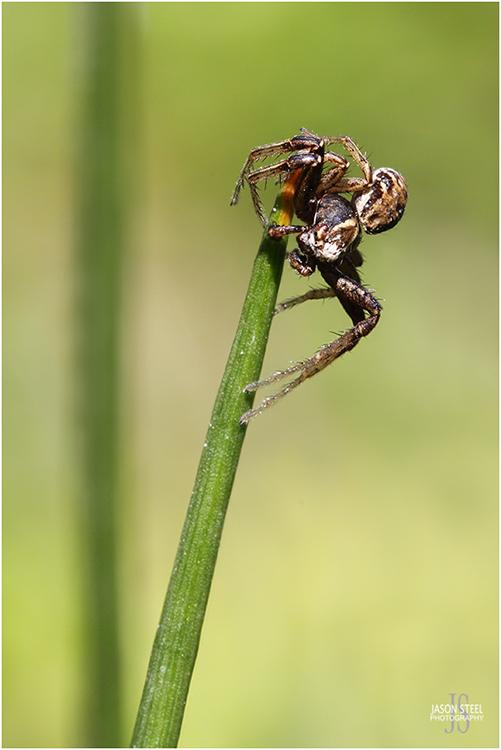
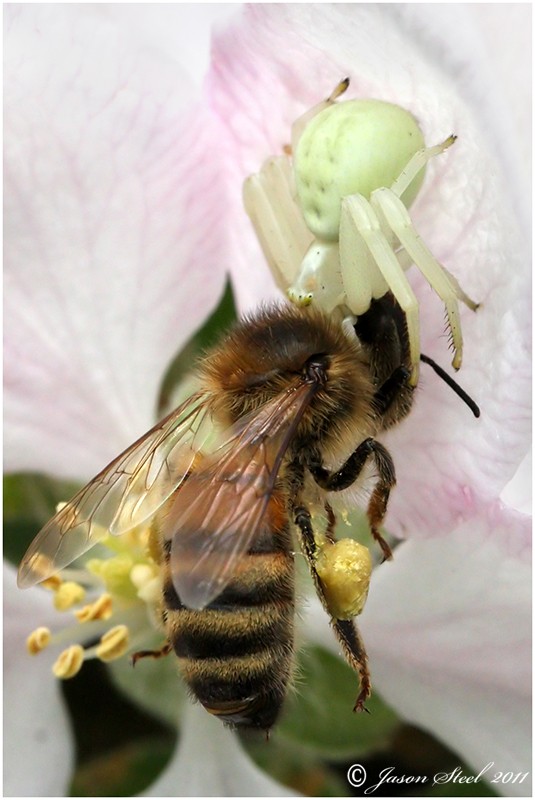
Adult female Misumena vatia
Flower Crab Spider (Misumena vatia)
Flower Crab Spiders, also known as Goldenrod Crab Spiders, are true Crab Spiders and are usually found hiding on white, yellow or pink flowers where they can be excellently camouflaged. Adult females can be found in white, yellow, pale green and red & white. Some specimens can display two red longitudinal stripes on their abdomen. They're frequently seen on woodland edges where grassland meets shrubbery, but they can also frequent open areas and gardens too. Females grow to a maximum body-length of around 9-11mm, but the far smaller males only reach 3-4mm. Males look very different from the females, and have a predominantly dark brown thorax and legs, and a cream / light green coloured abdomen with matching band in the centre of the thorax.
Misumena vatia has a wide range across Europe and the USA. In the UK it is common across the southern half of Wales & England especially around London and the south-east. Adults are most often seen from May-June but they can be seen from April right up until September. Males are seldom seen after June though.
The Flower Crab Spider is an excellent ambush predator with the remarkable ability to slowly change its body colour to match the flower that it is hiding on. This colour-changing process can take 4-25 days to complete. Changing from yellow to white can be done as quickly as 4-6 day as the spider just has to secrete the yellow pigment. However changing from white to yellow takes 10-25 day, far longer as the yellow pigment must be built up slowly inside the spider. Male specimens lack this colour-changing ability completely.
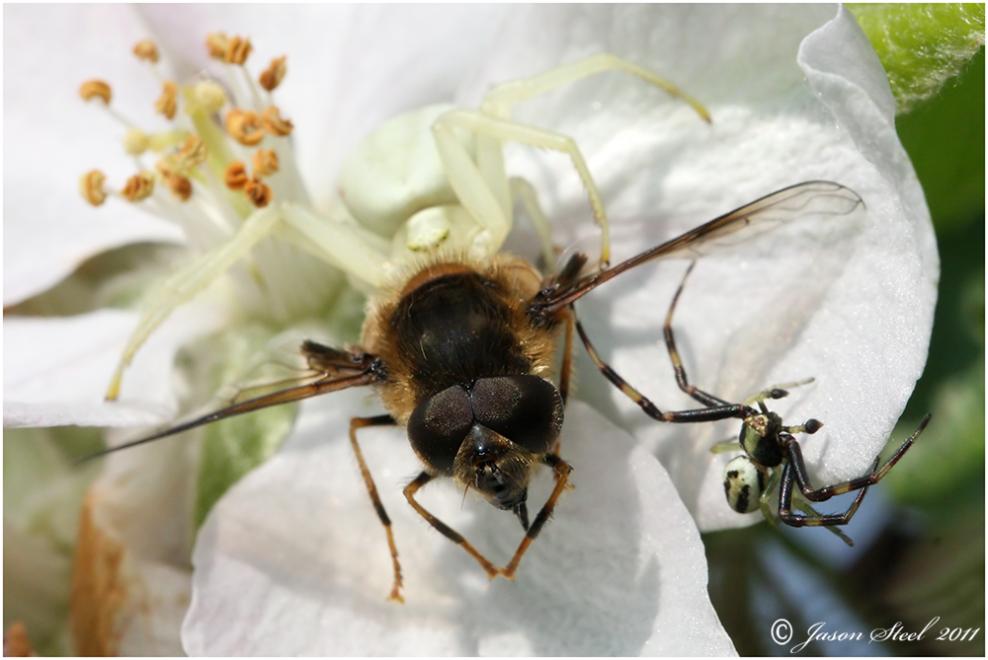
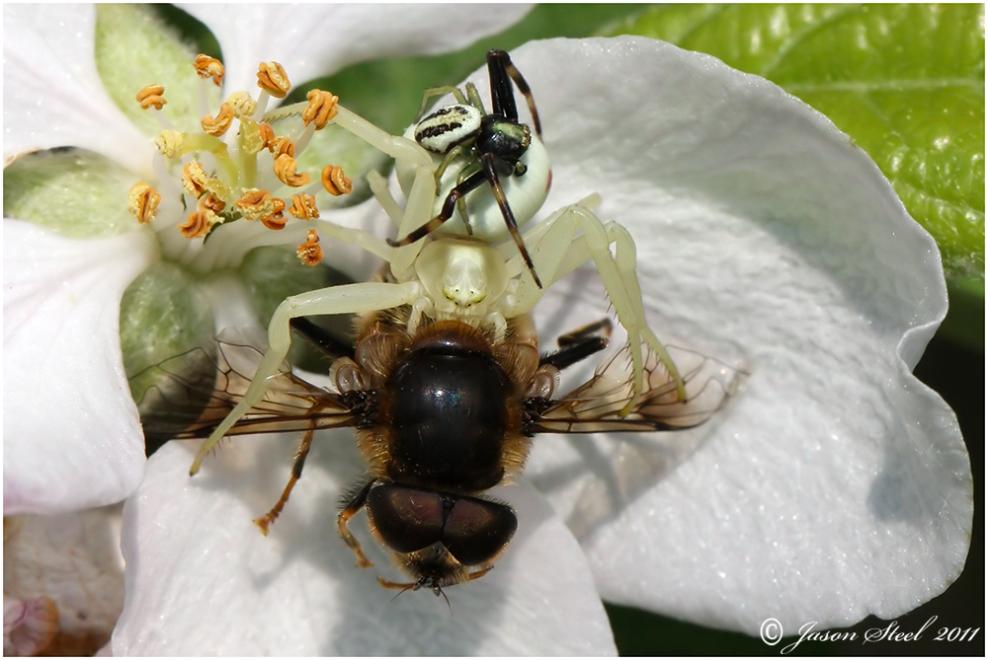
This male waits until the female is pre-occupied with killing a large hoverfly before jumping up and seizing this opportunity to mate. Some Crab Spiders are also known to tie up the female in silk-like web before attempting to mate. The females do not emit pheromones but they do leave draglines of silken thread which the males follow to locate her. After giving birth the adult female will guard her young for a while before dying off. Most adult males die shortly after mating if they survive the mating process without being eaten. The young usually overwinter in leaf litter until the following spring when the spring flowers emerge. Very occasionally an adult female may also overwinter in leaf litter.
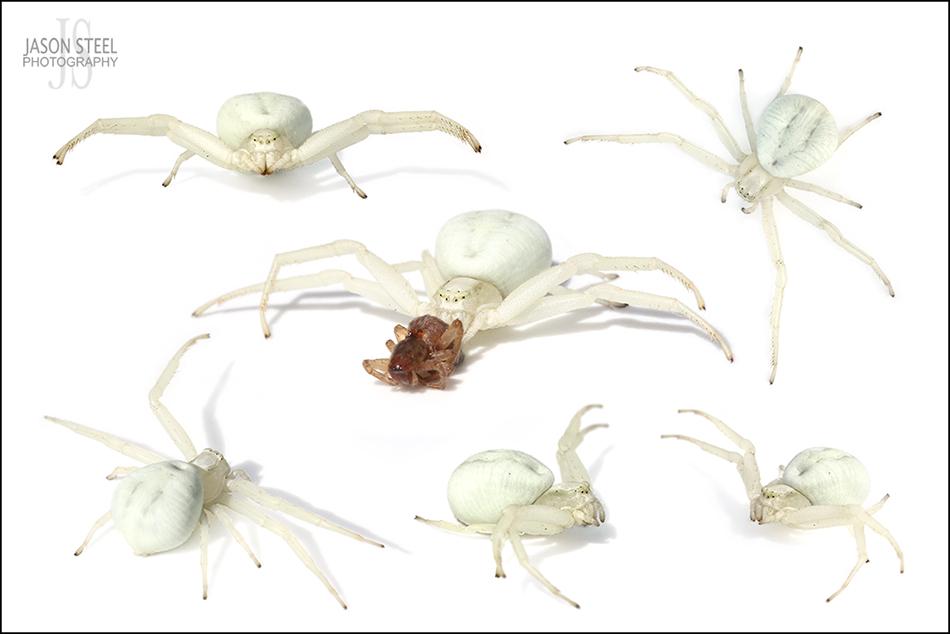
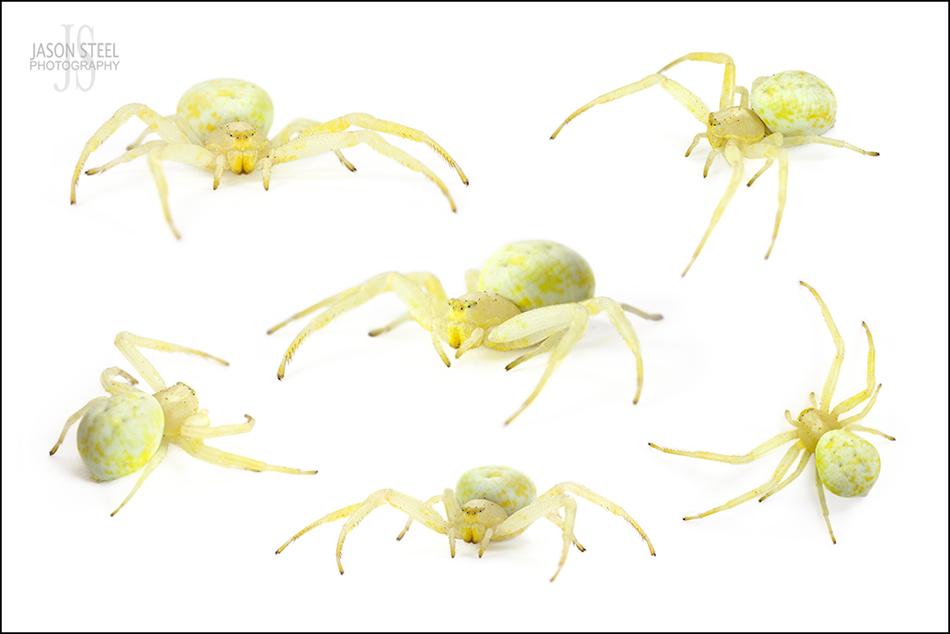
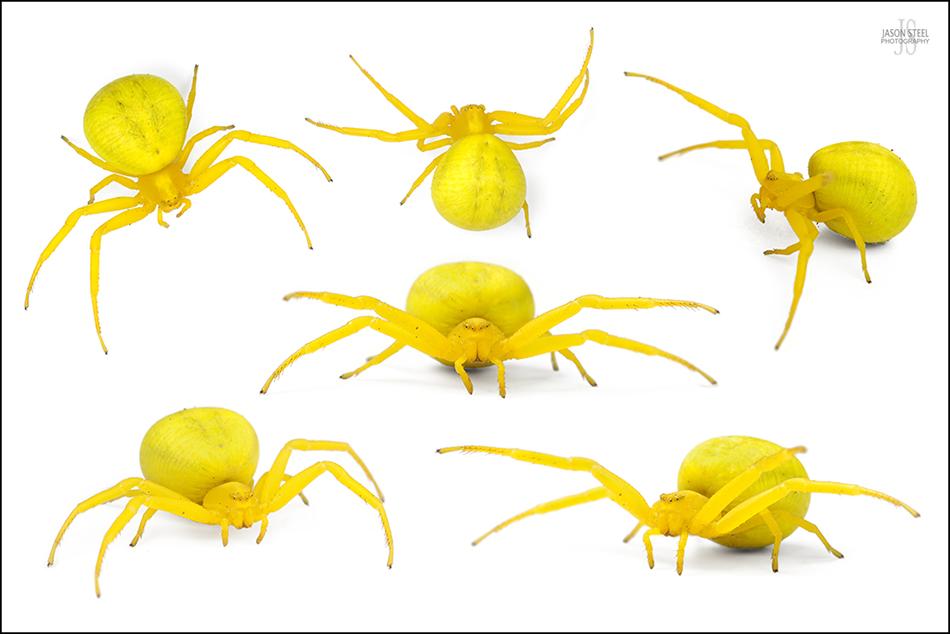
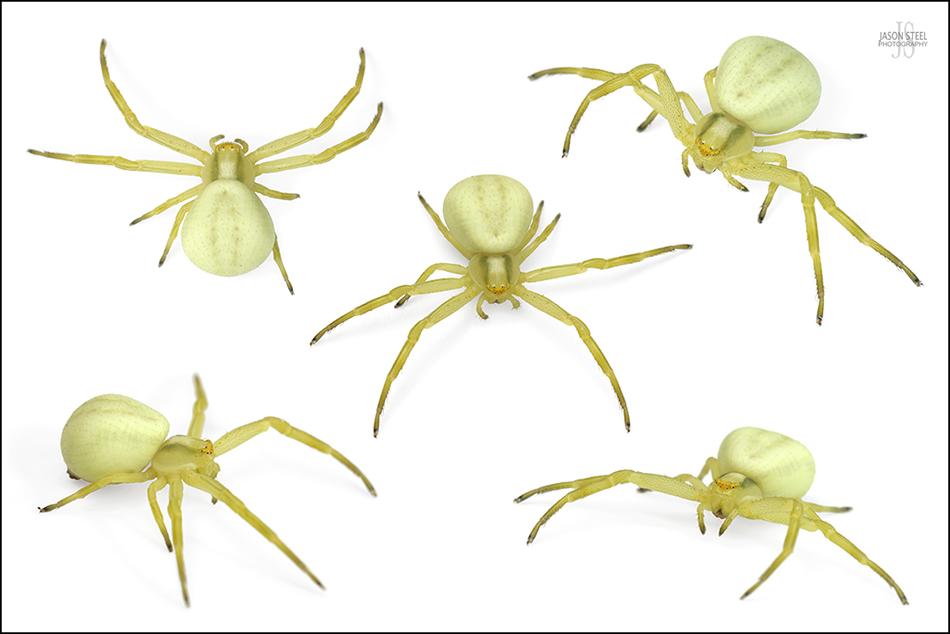
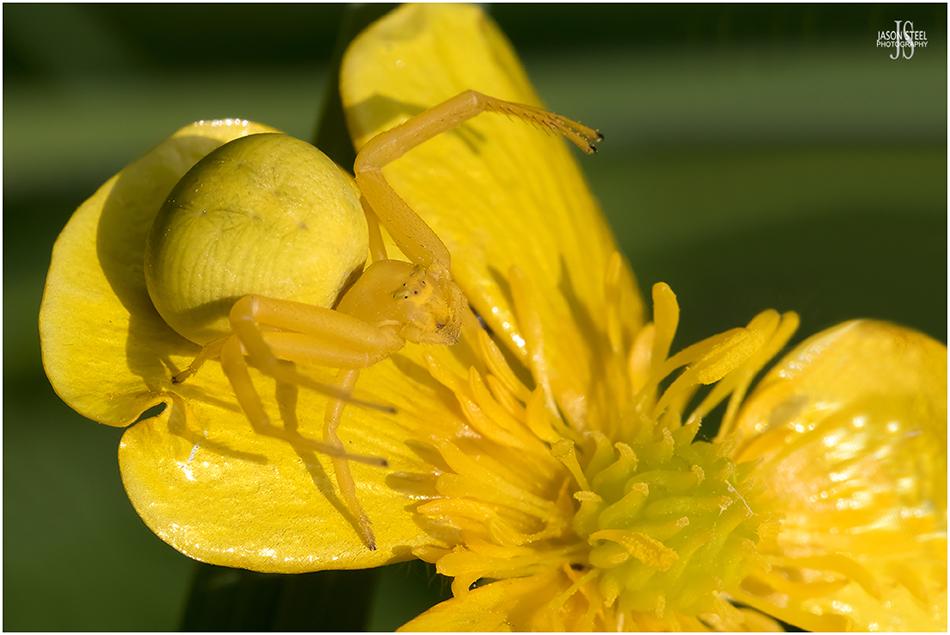
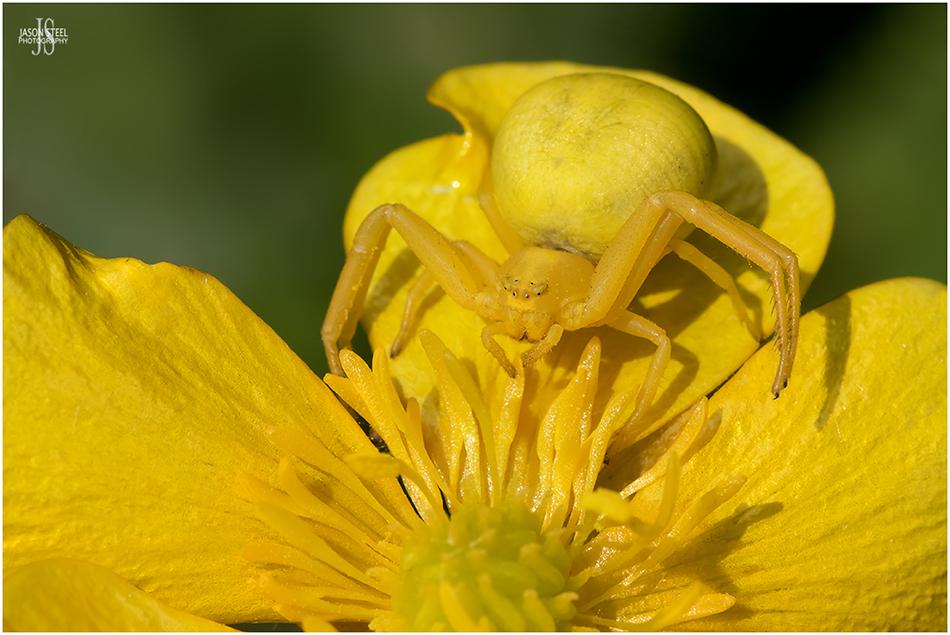
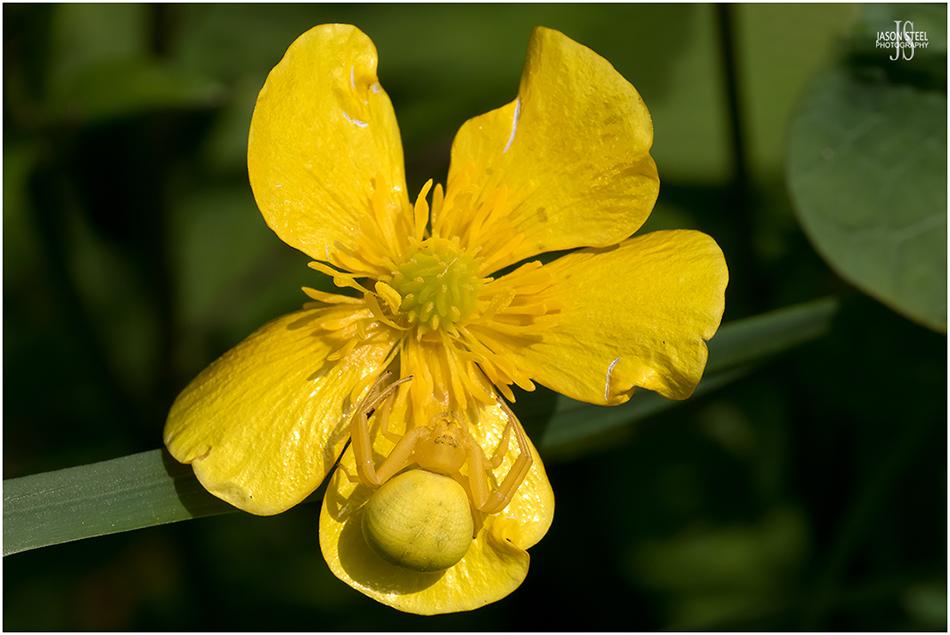
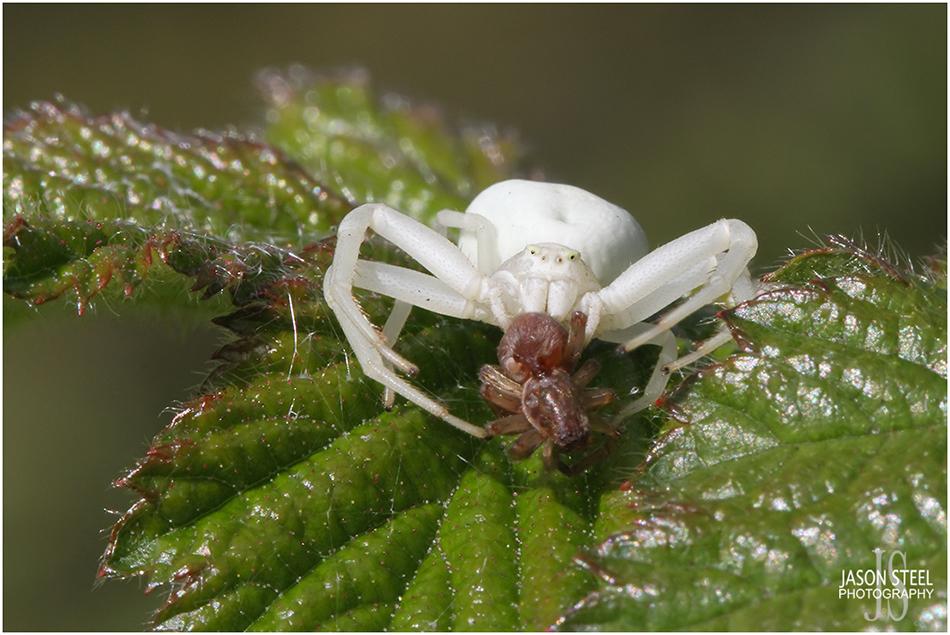
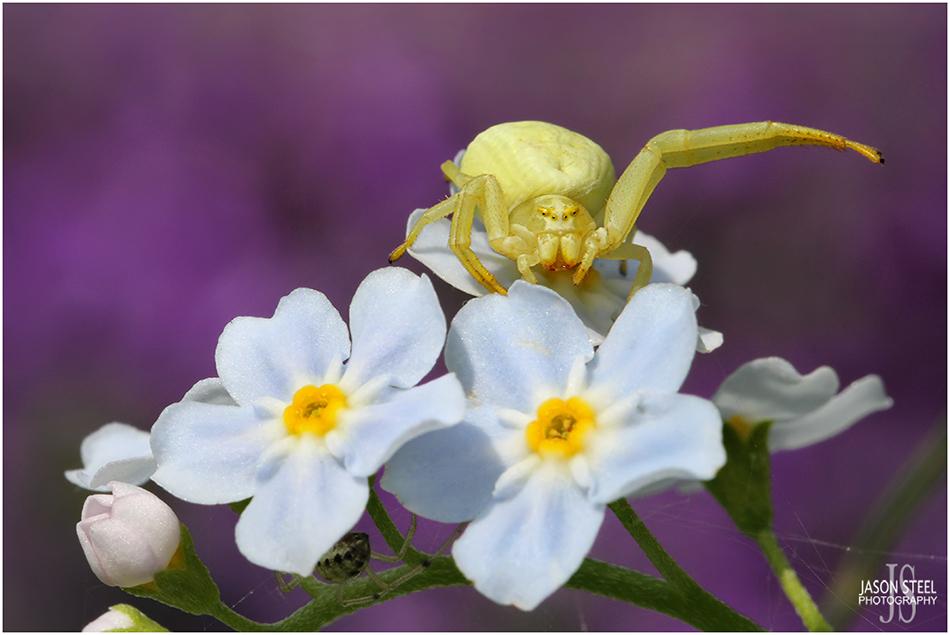
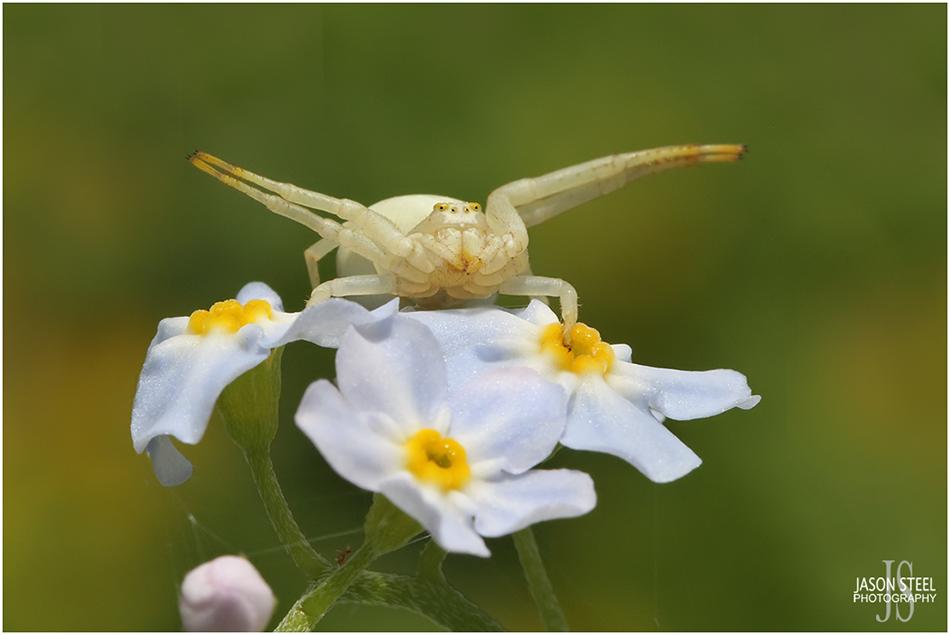
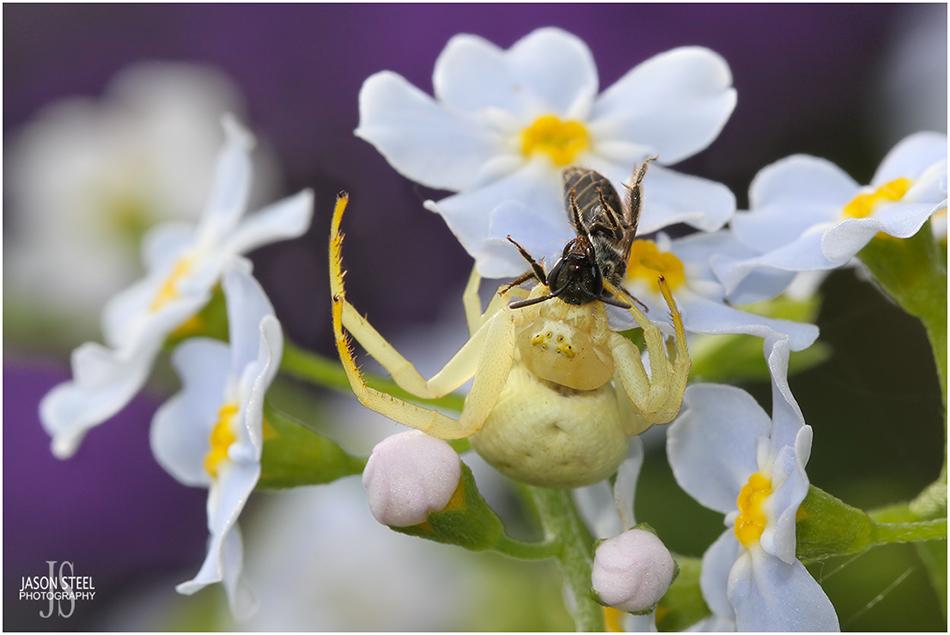
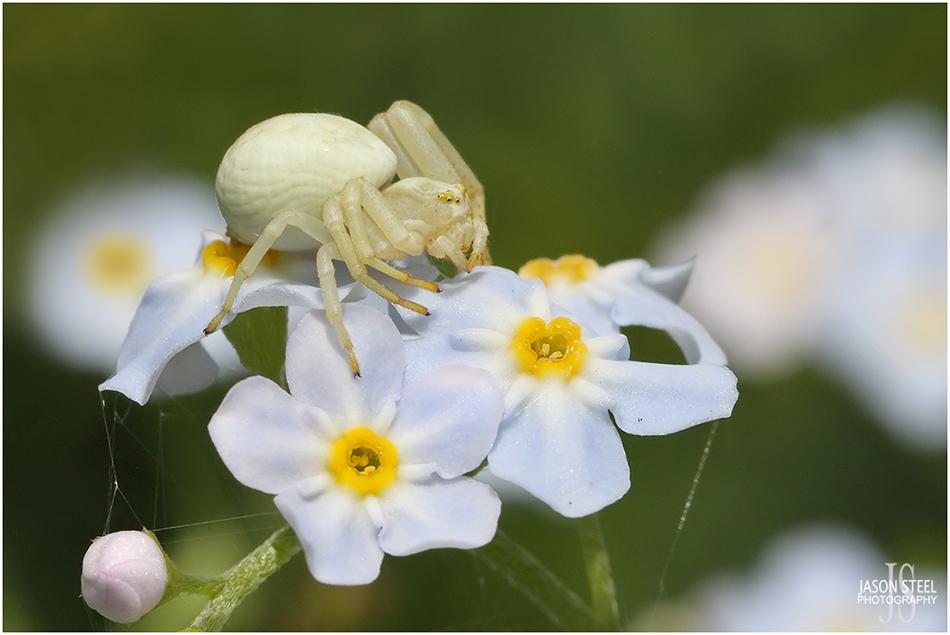
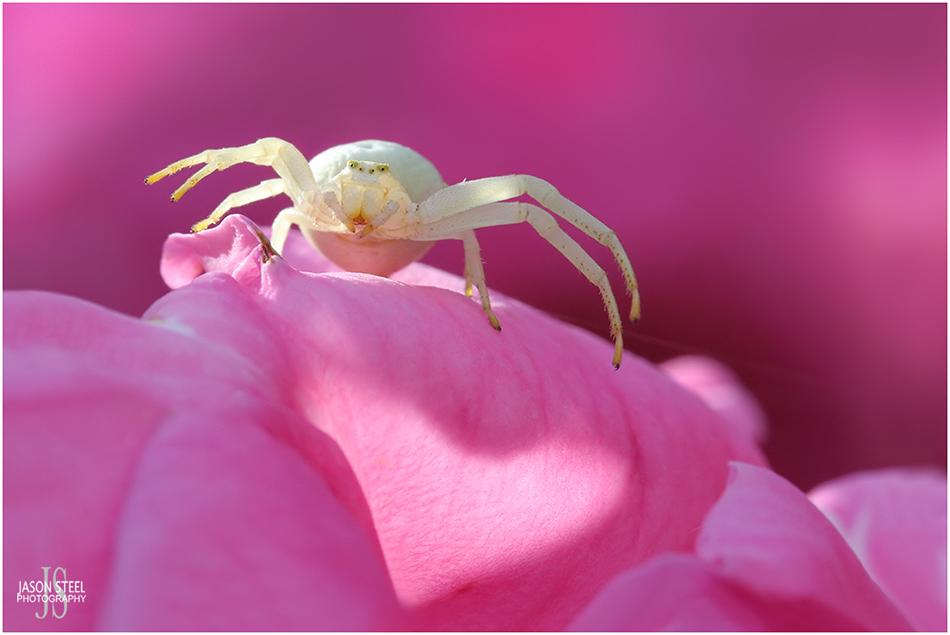
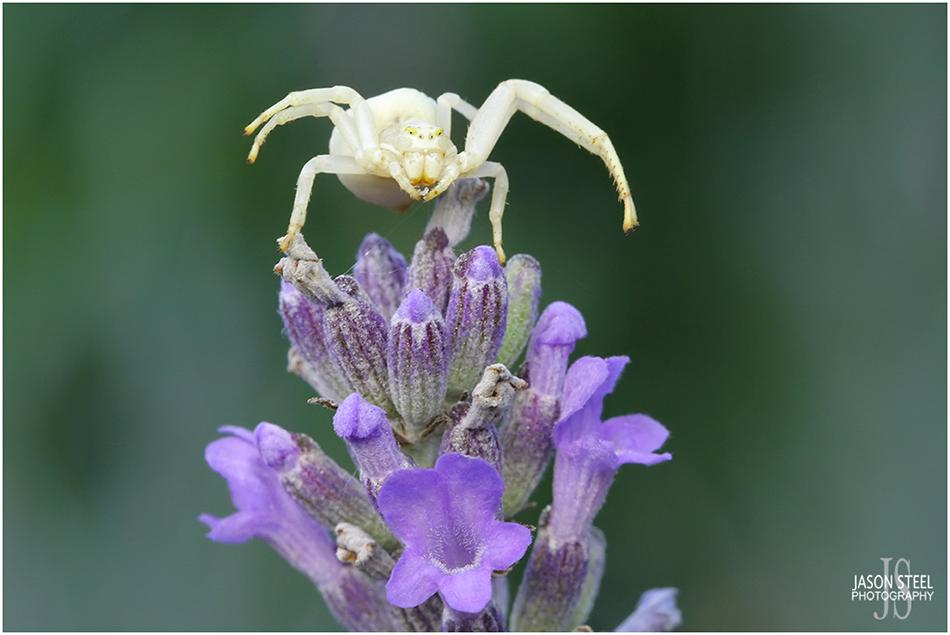
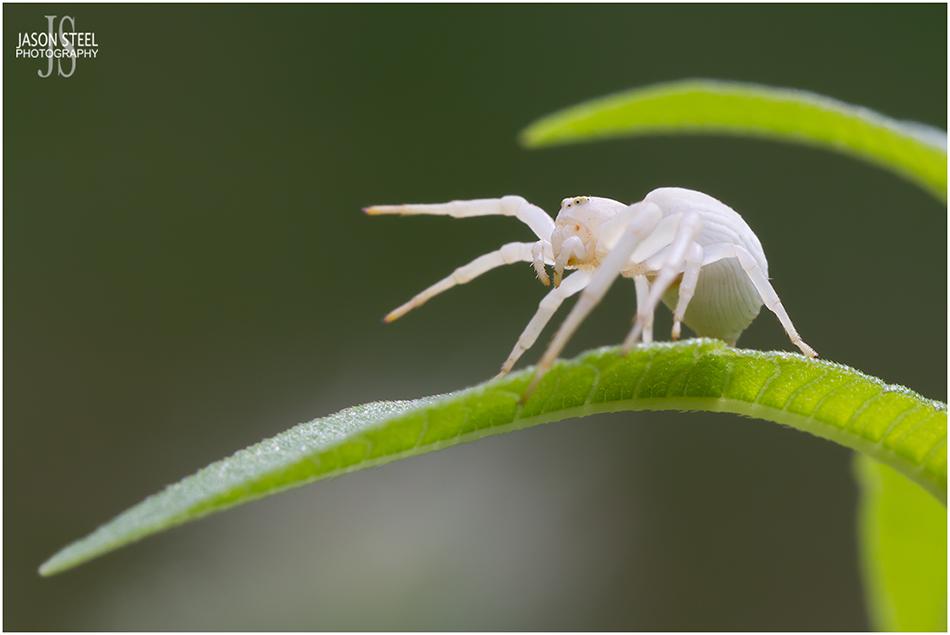
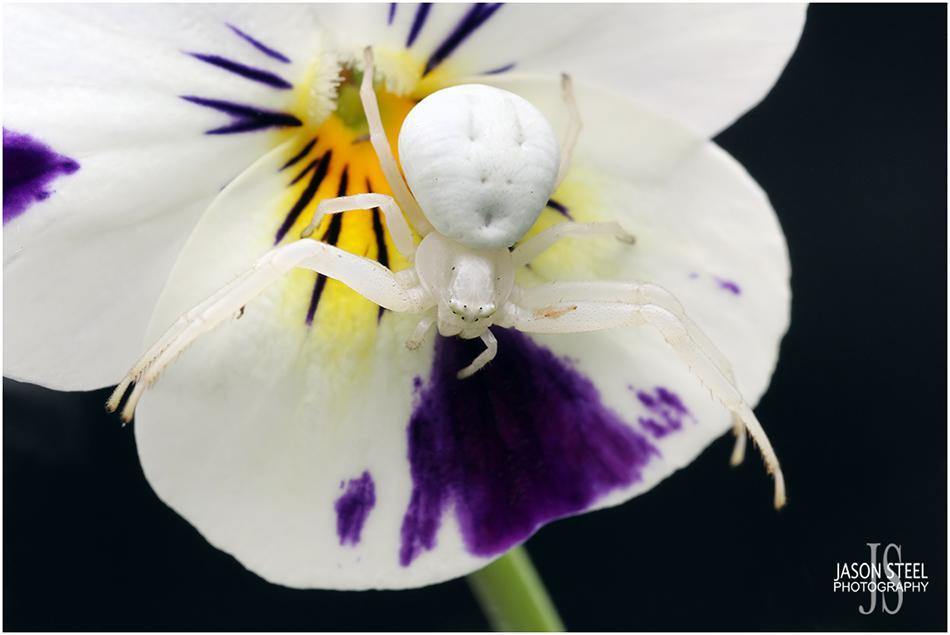
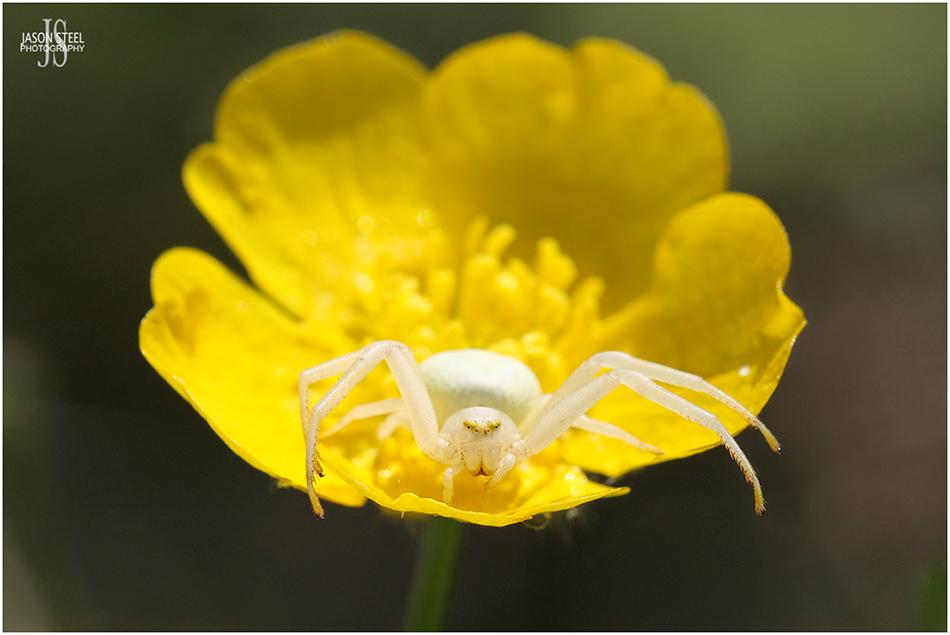
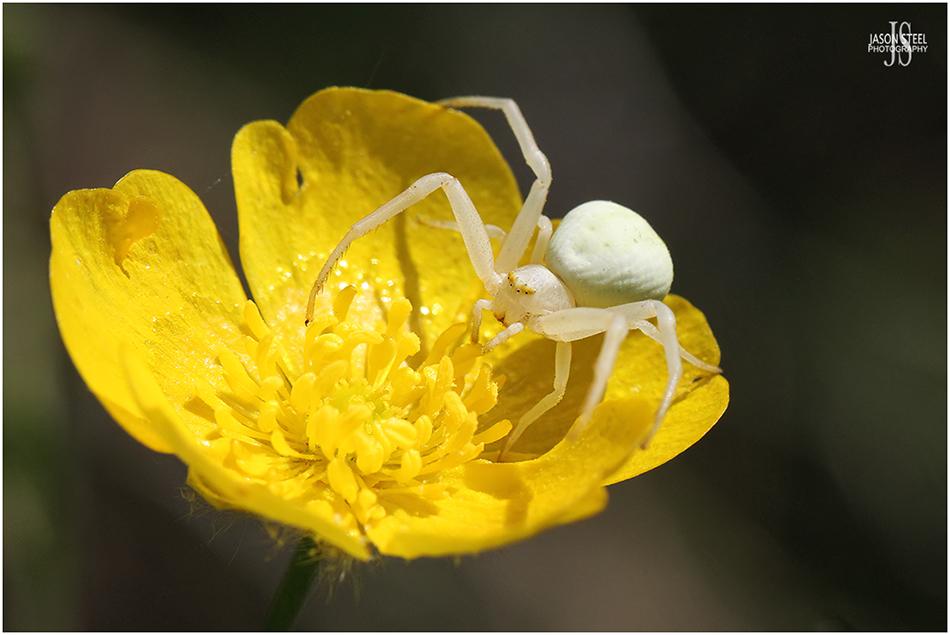
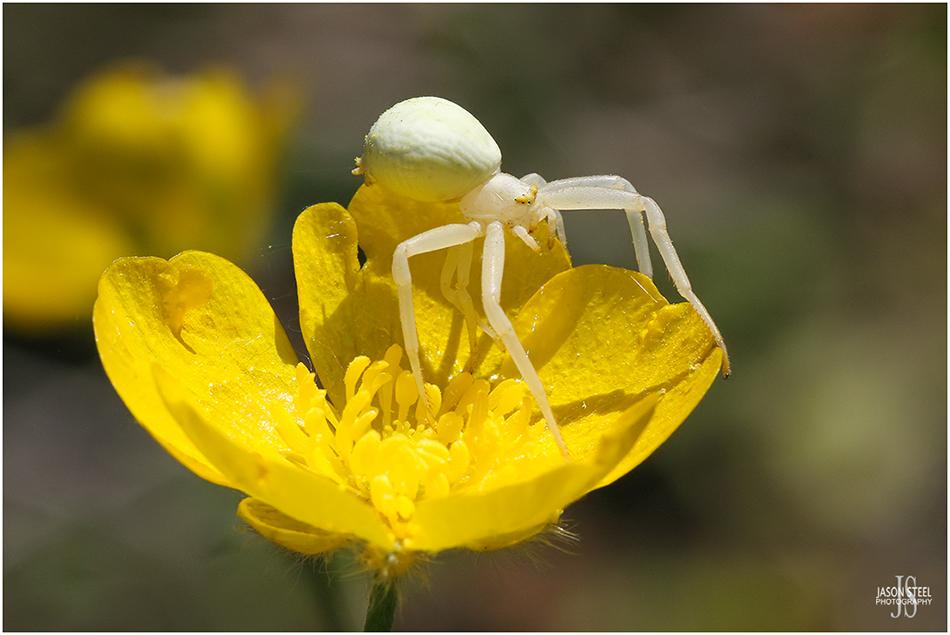
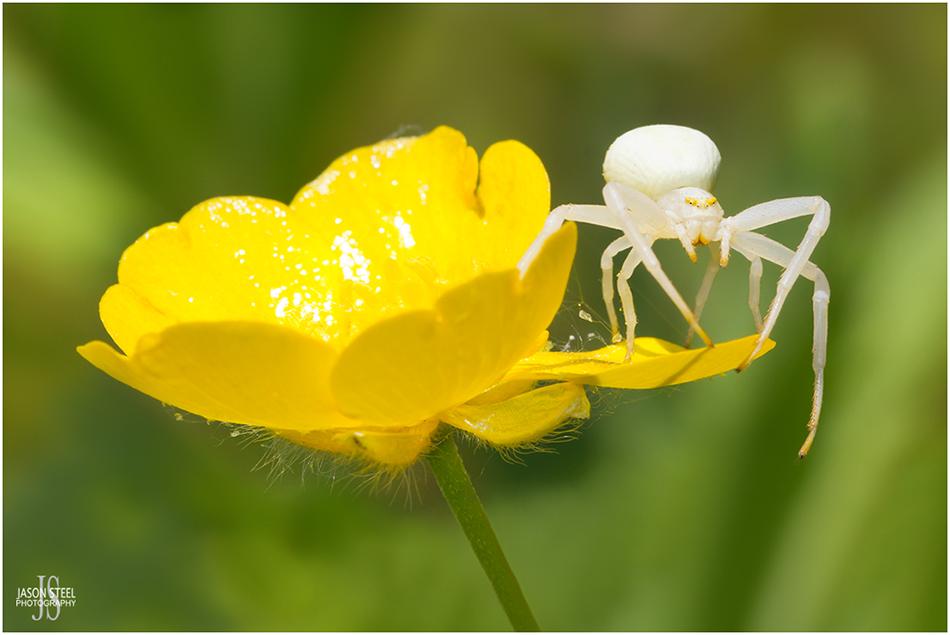
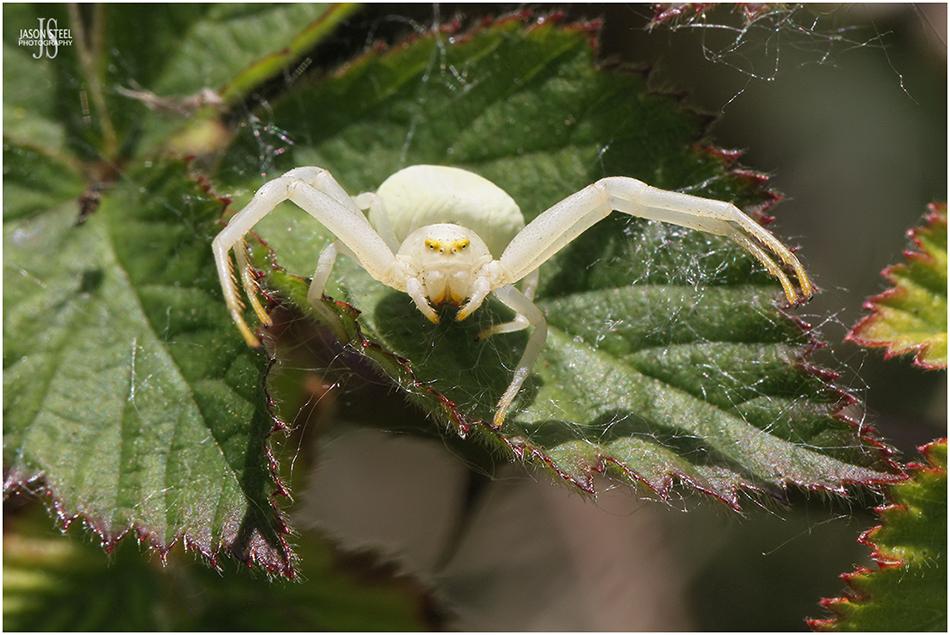
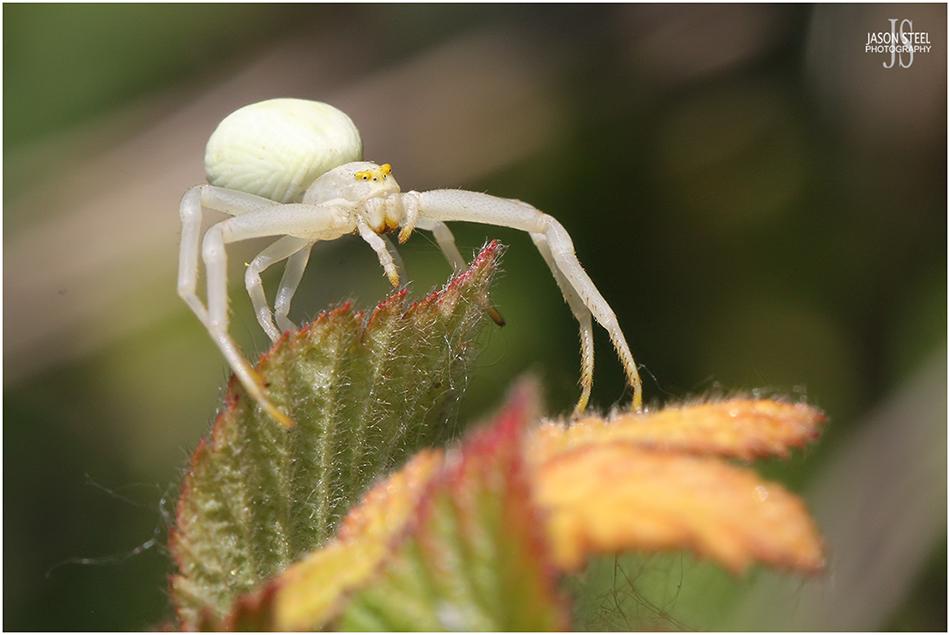
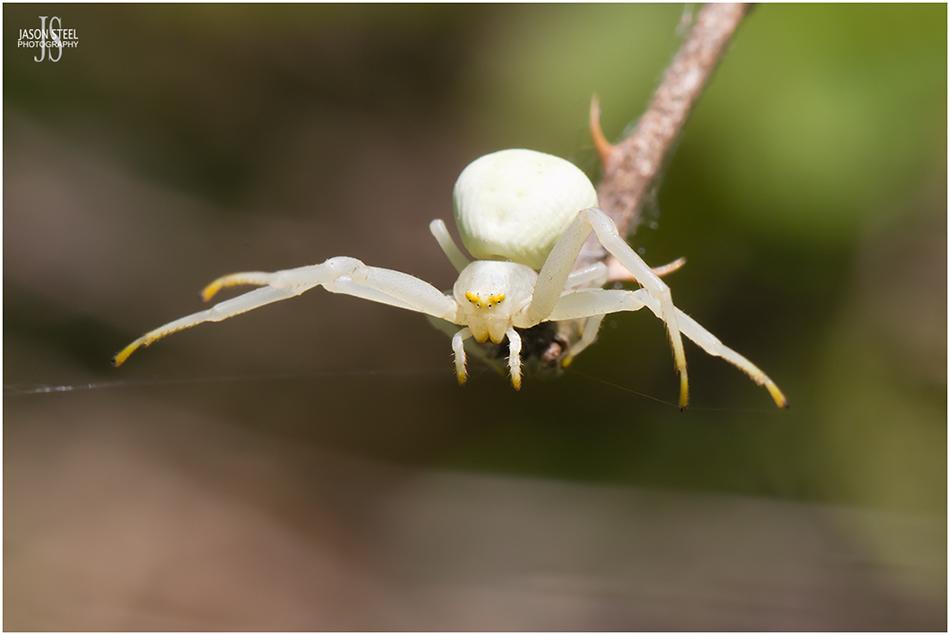
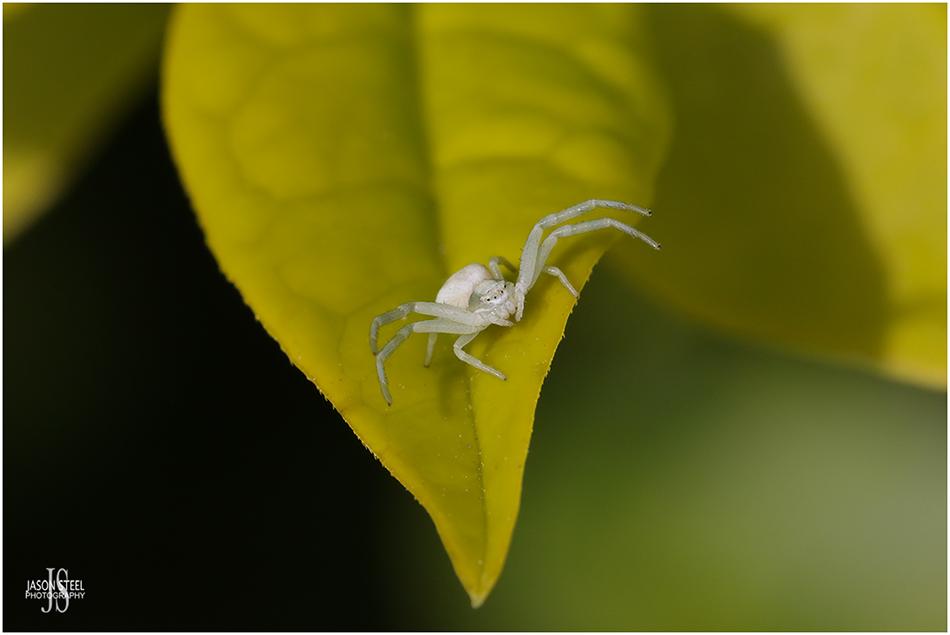
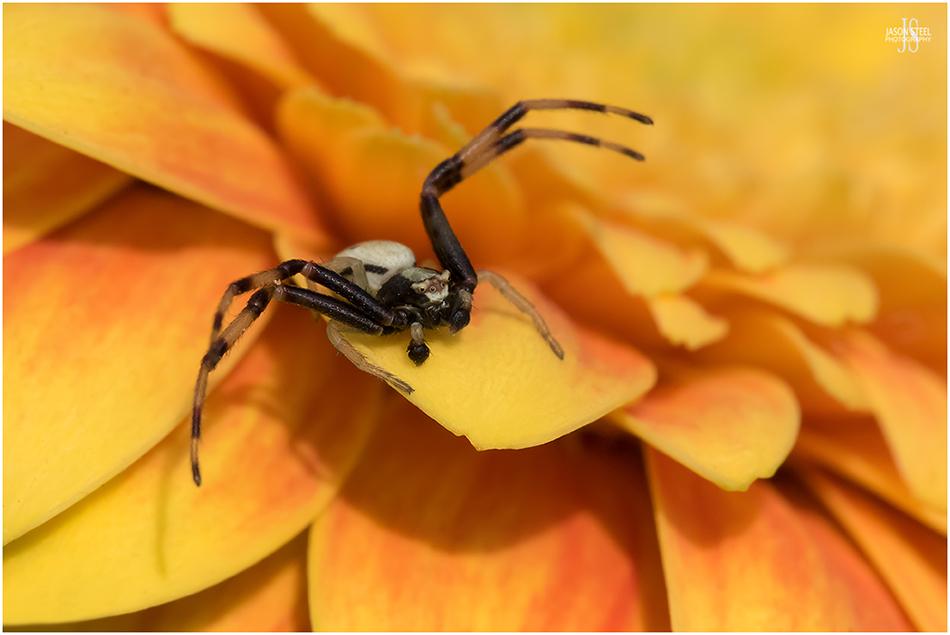
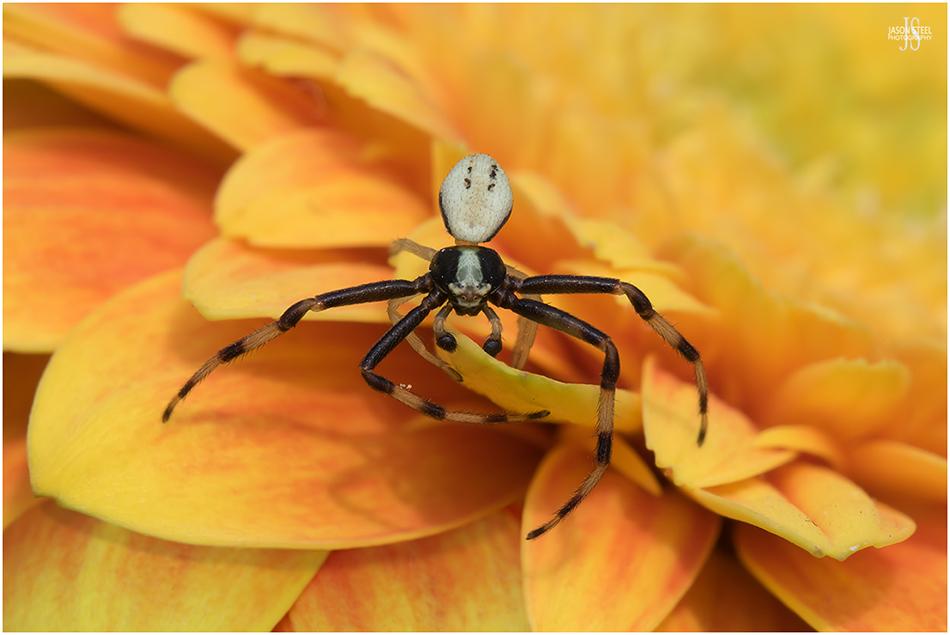
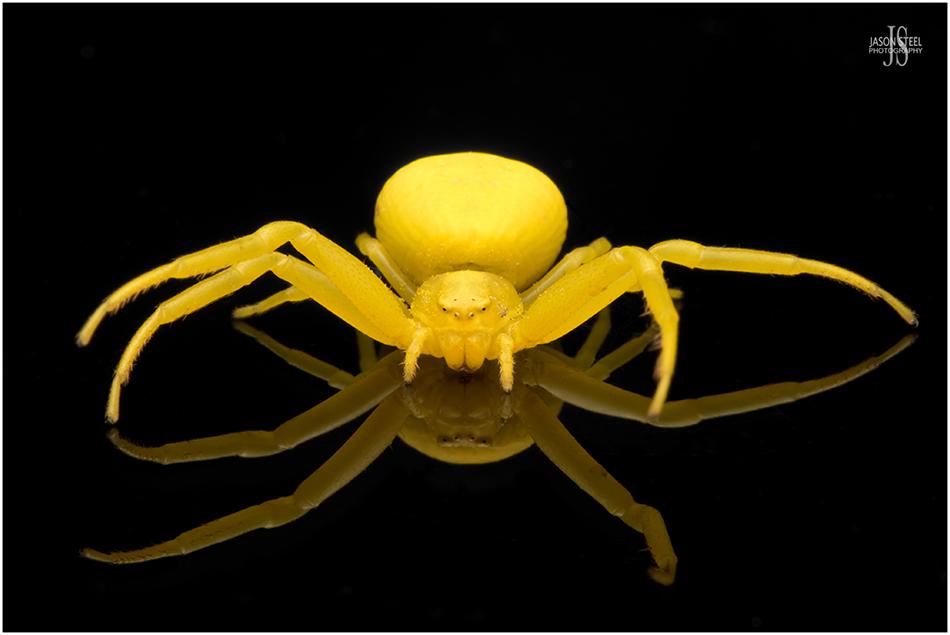
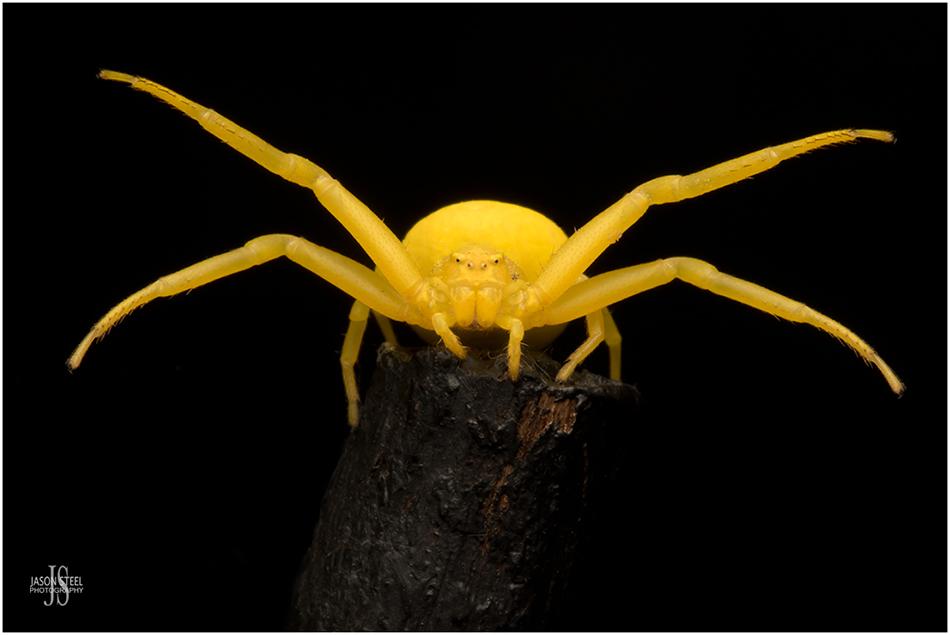
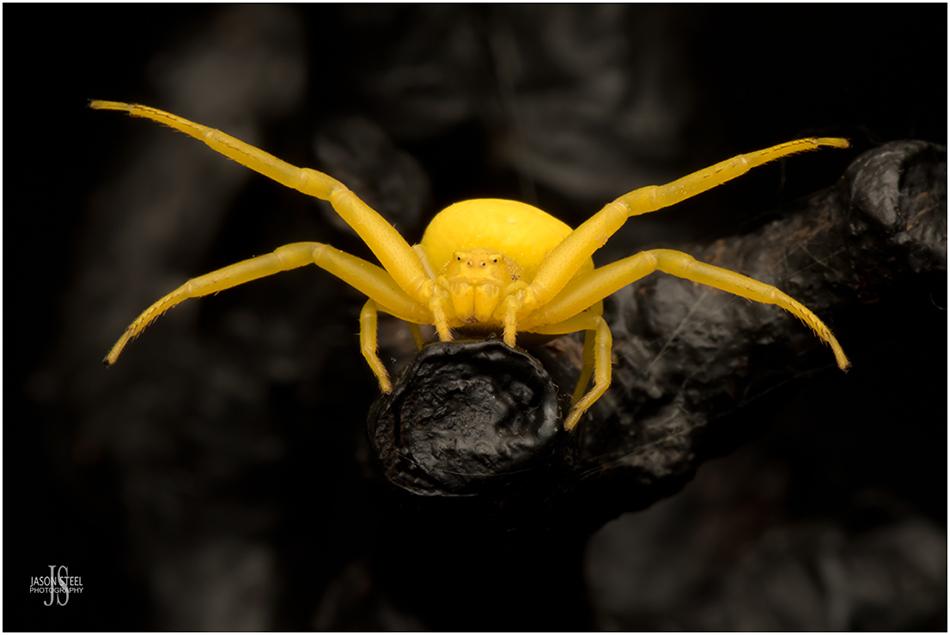
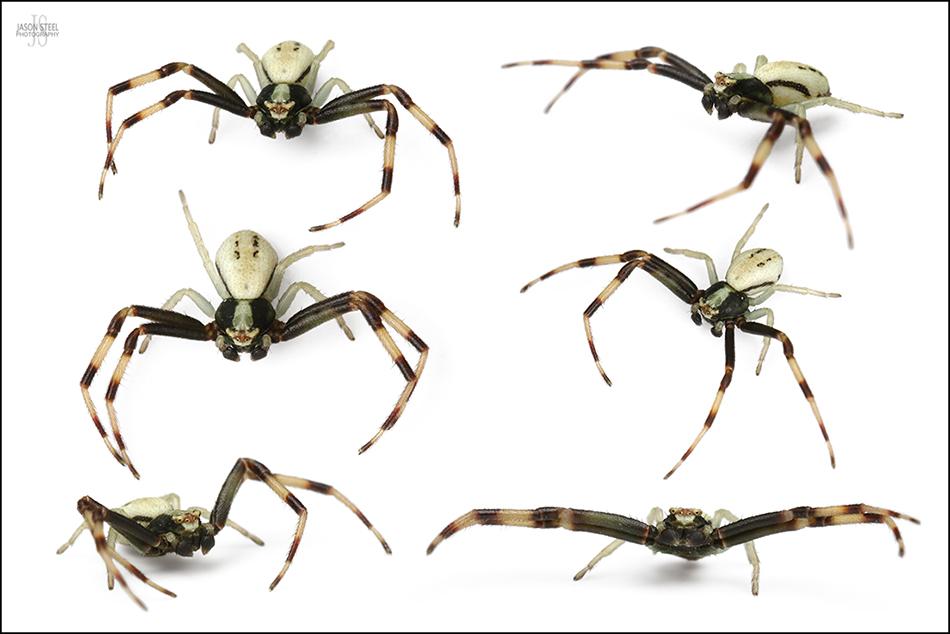
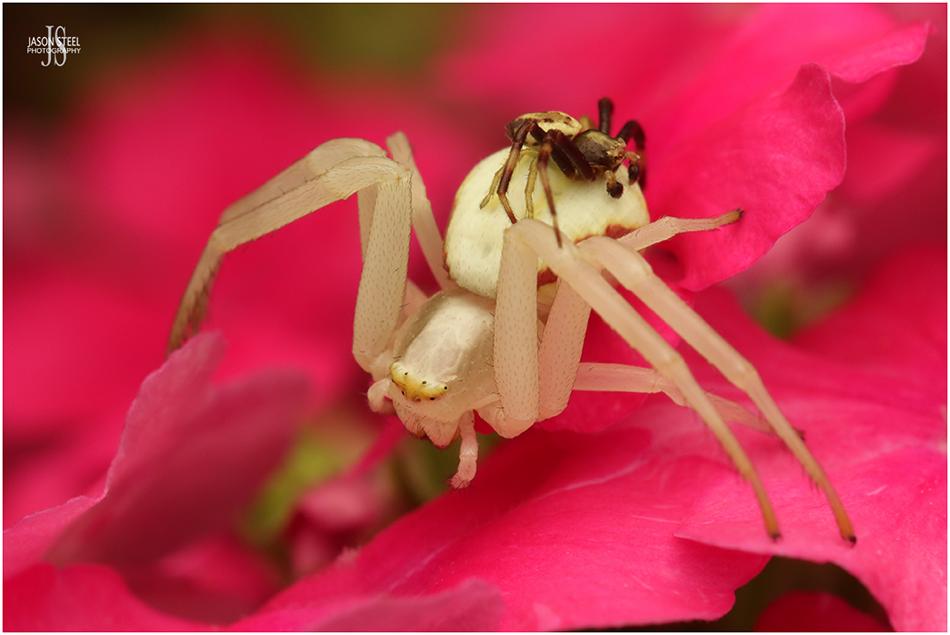
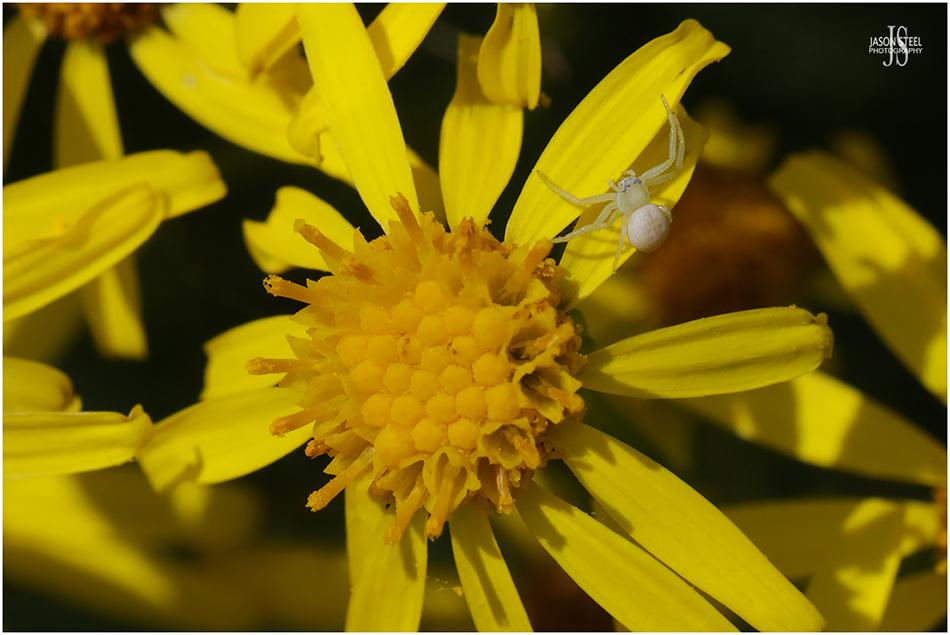
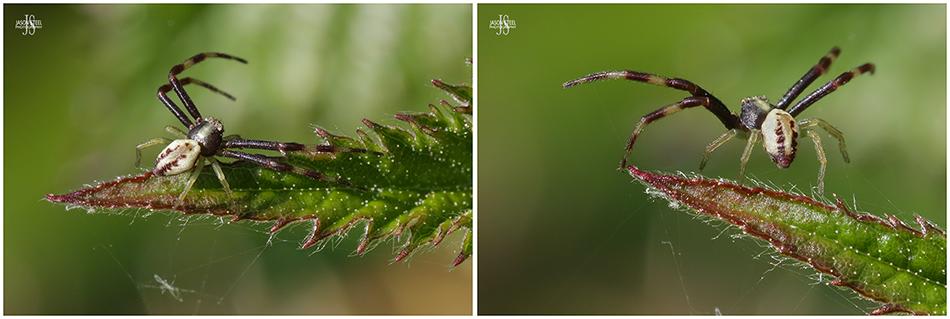
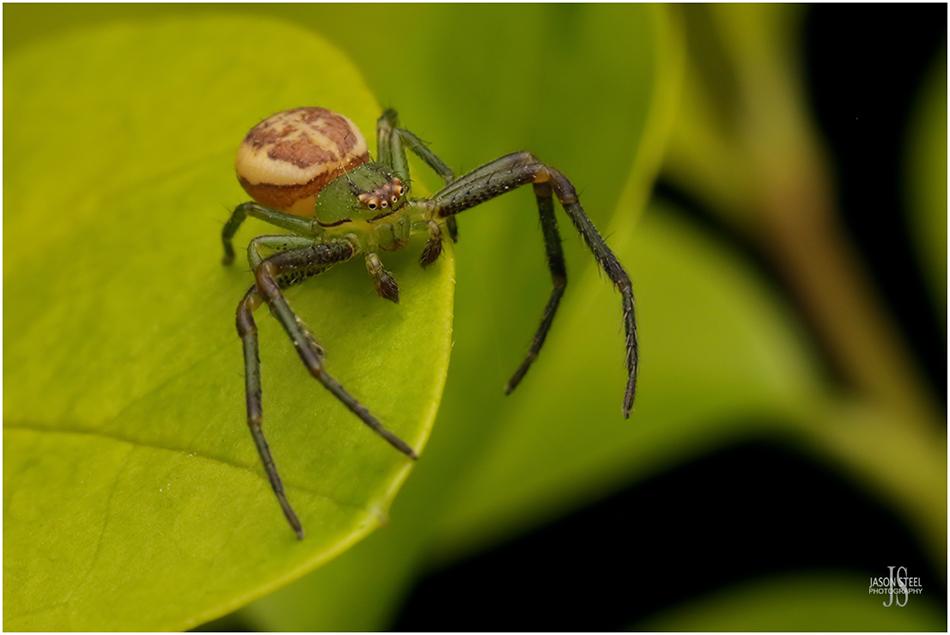
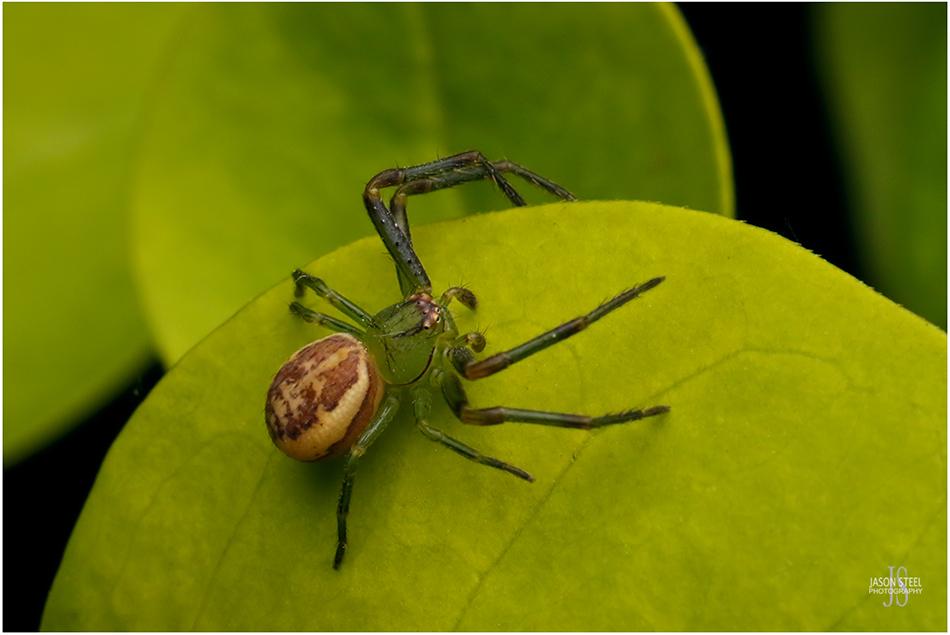
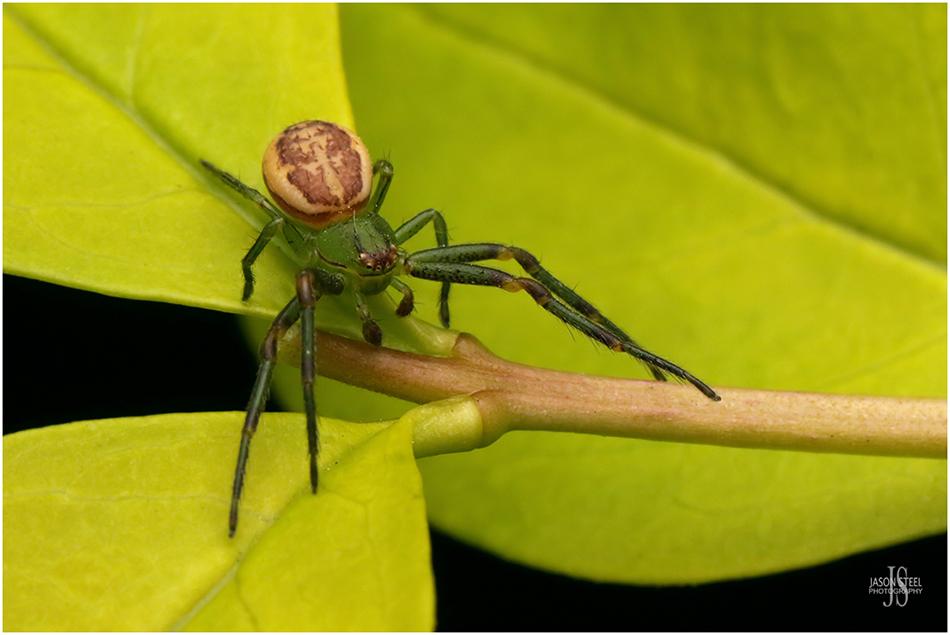
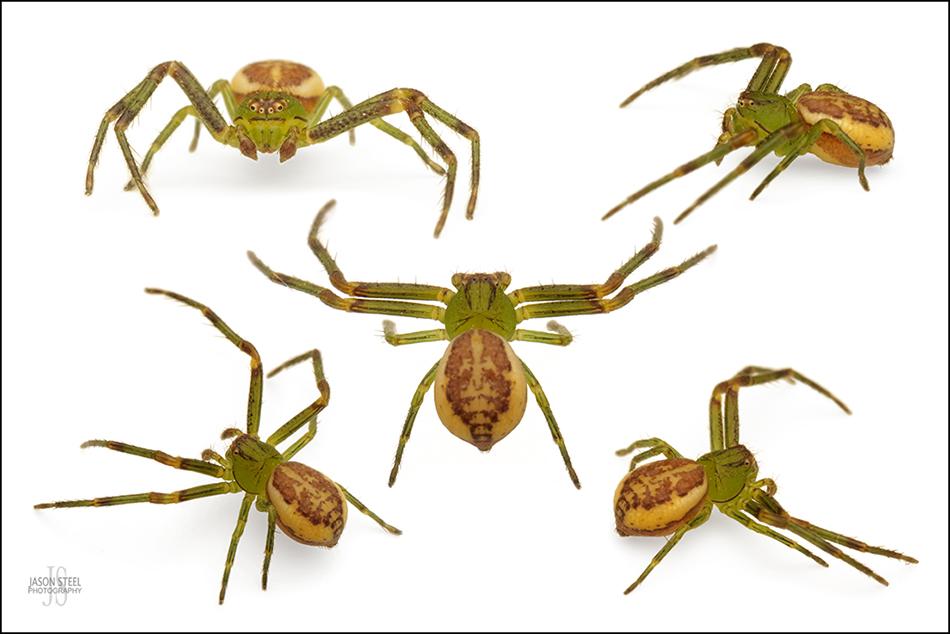
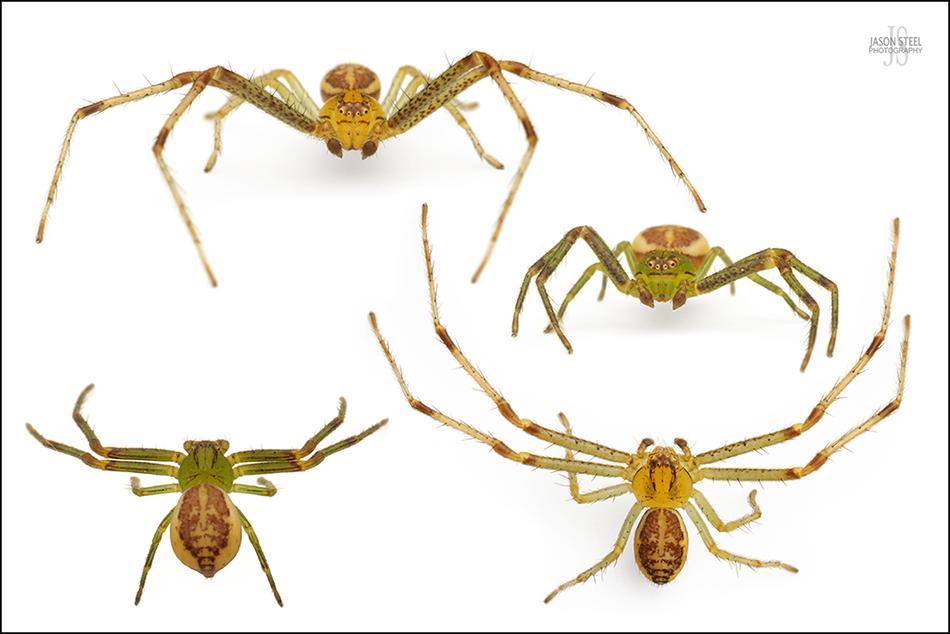
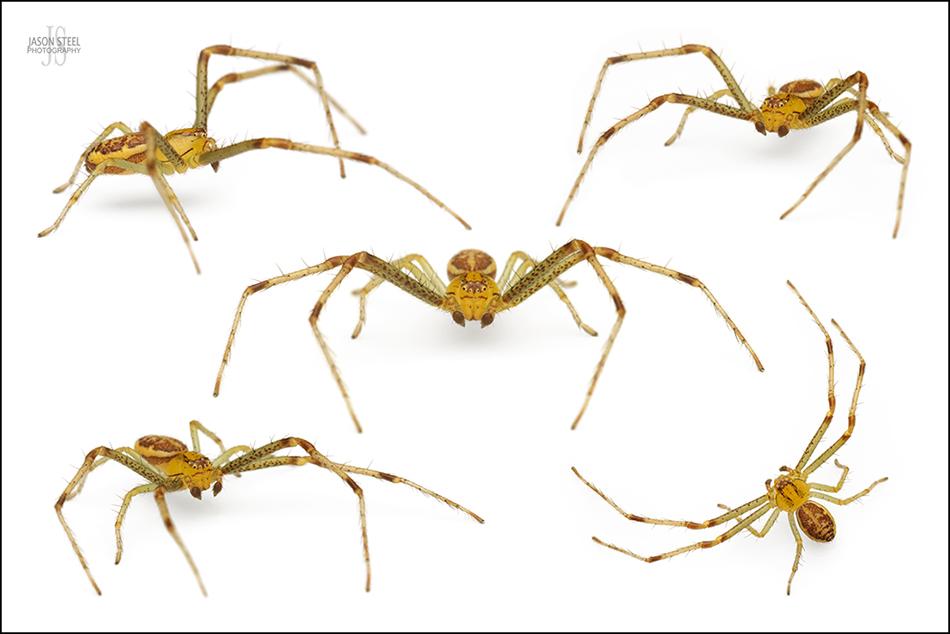
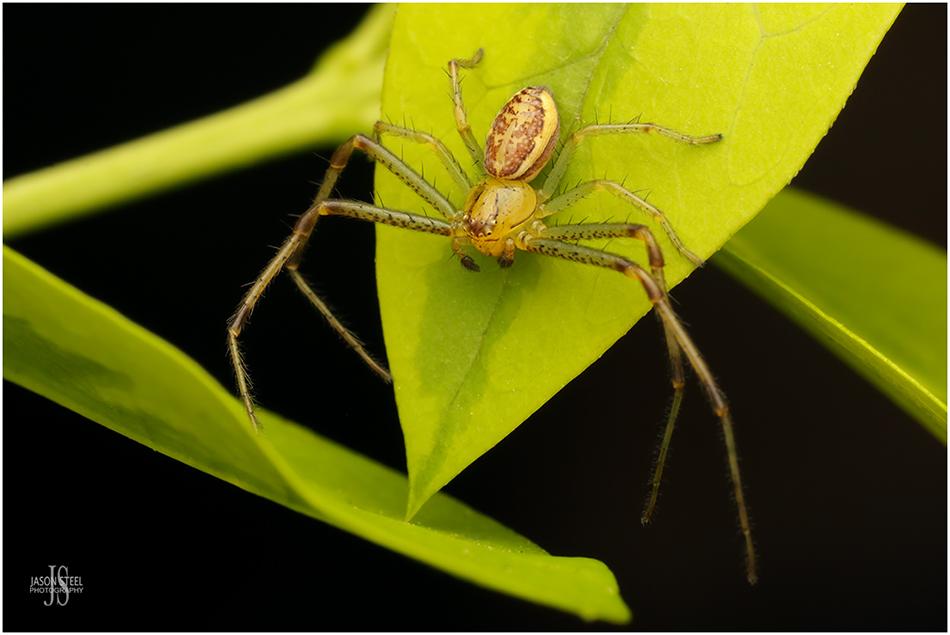
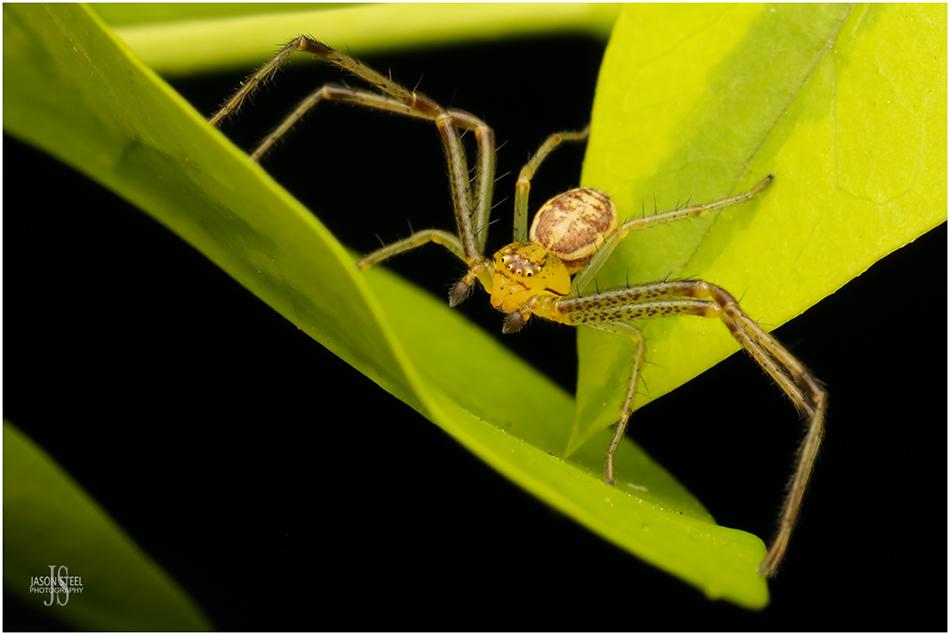
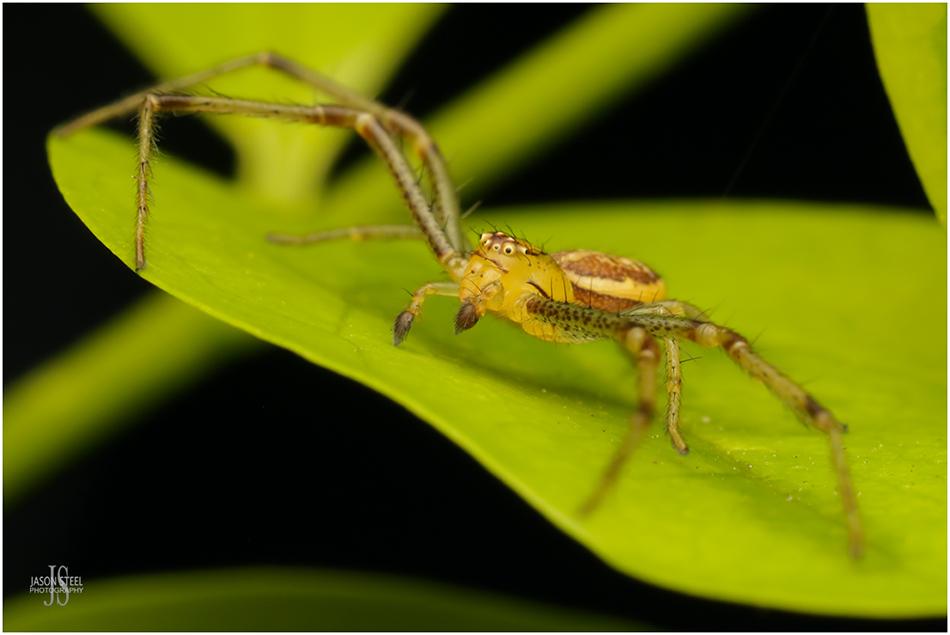
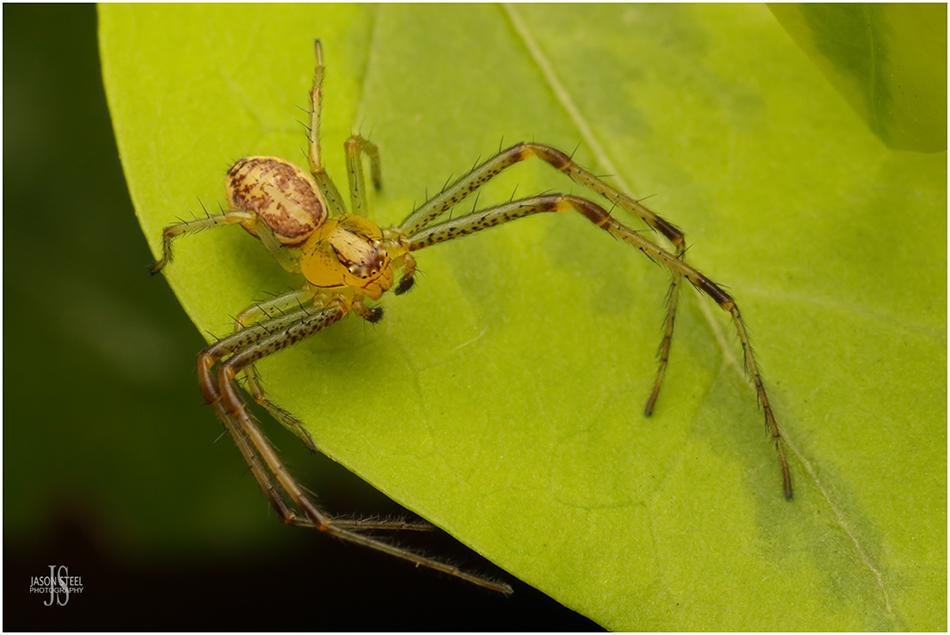
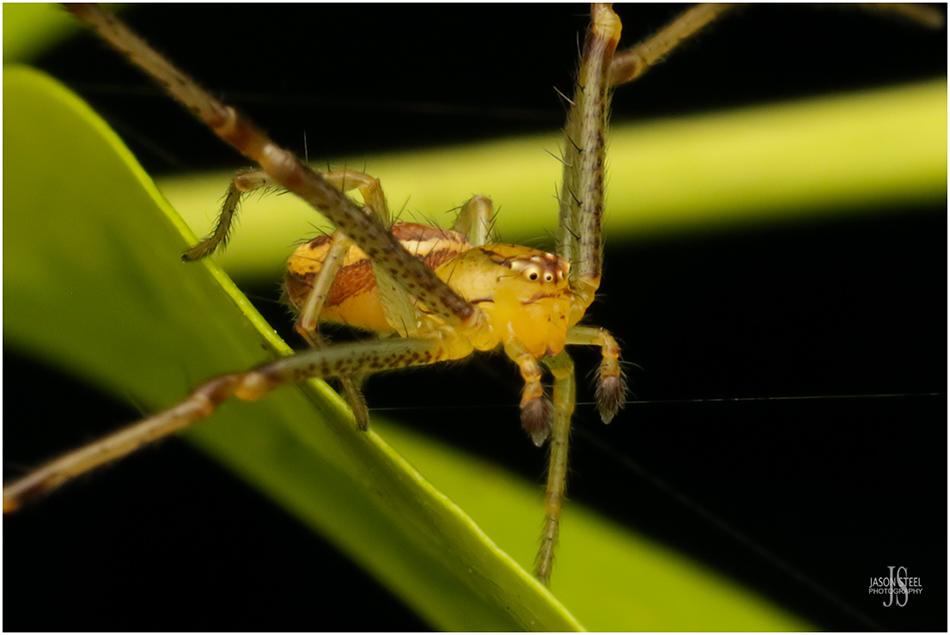
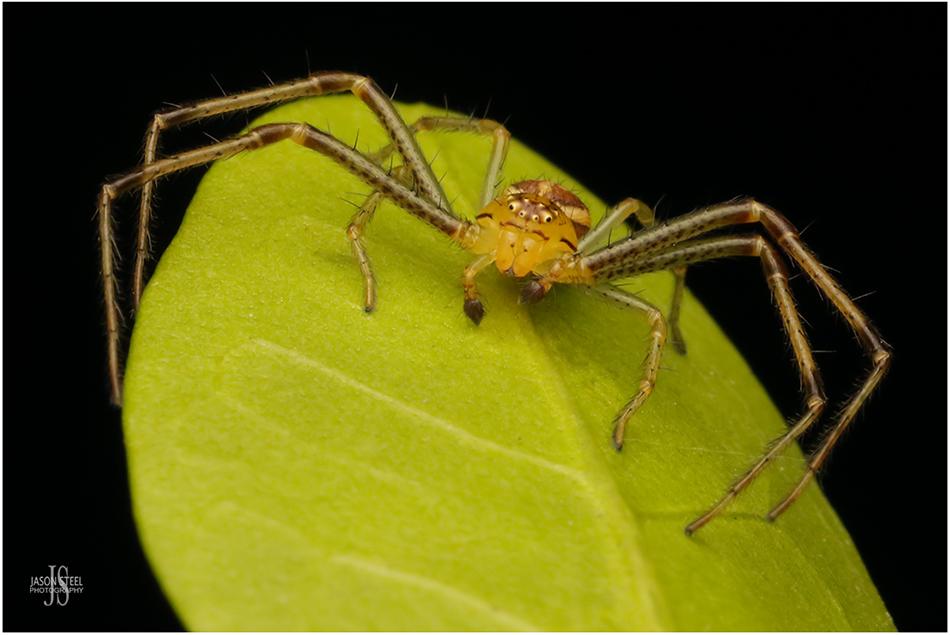
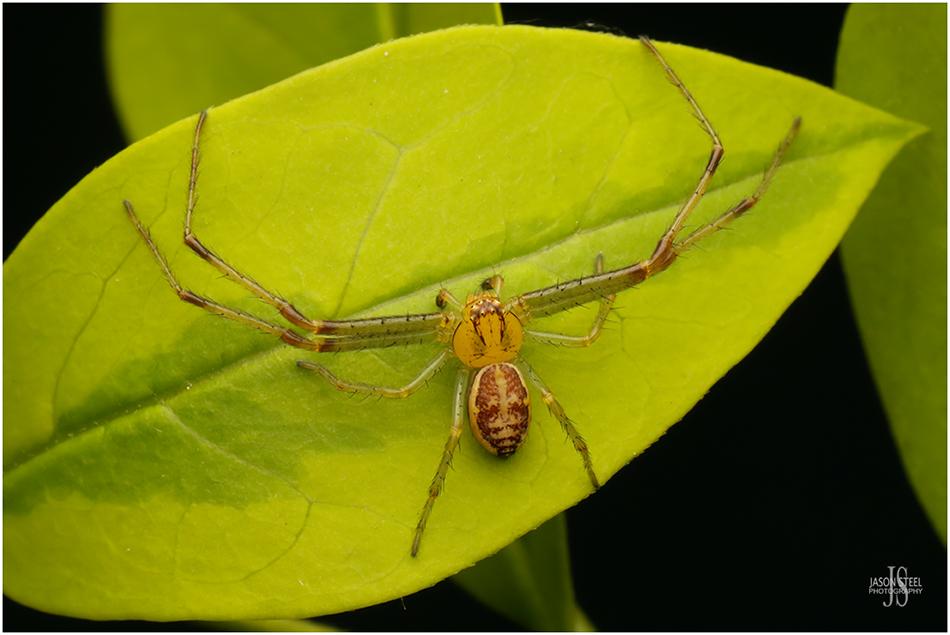
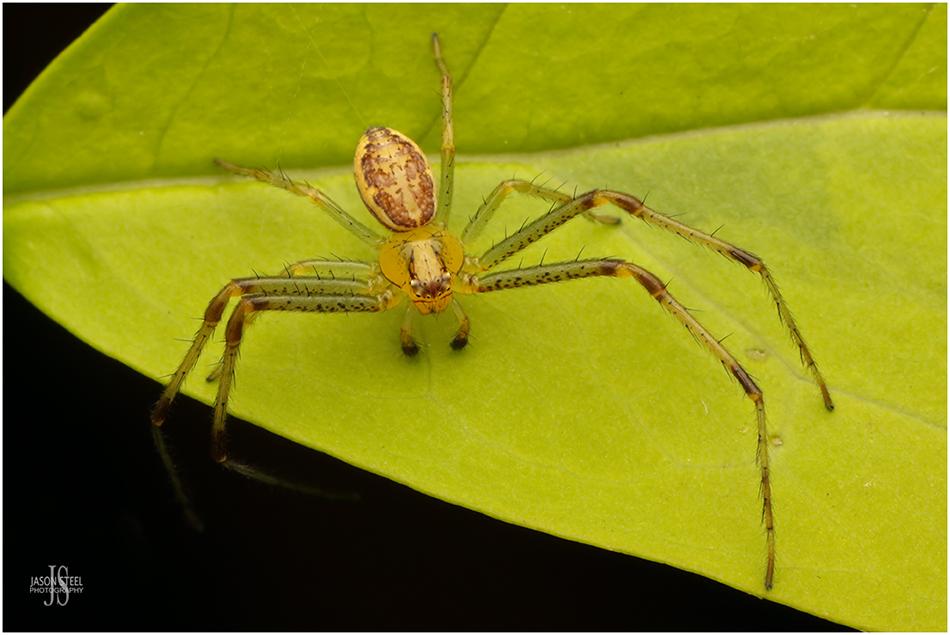
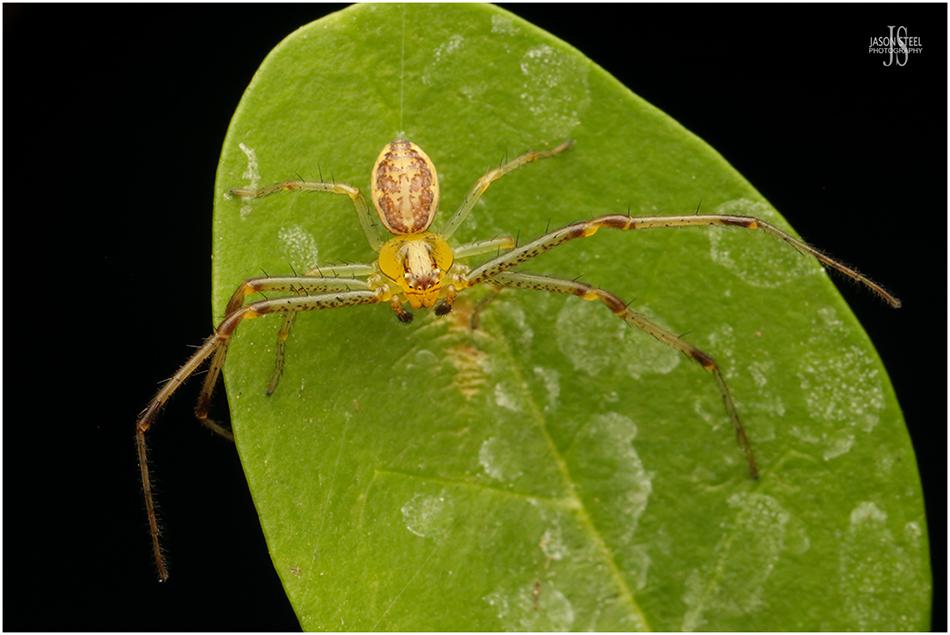
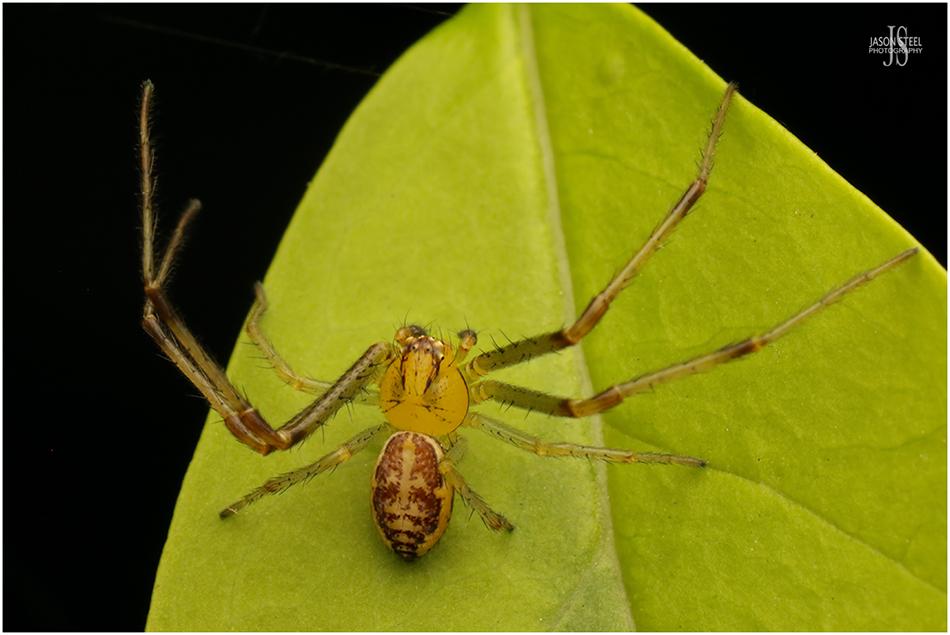
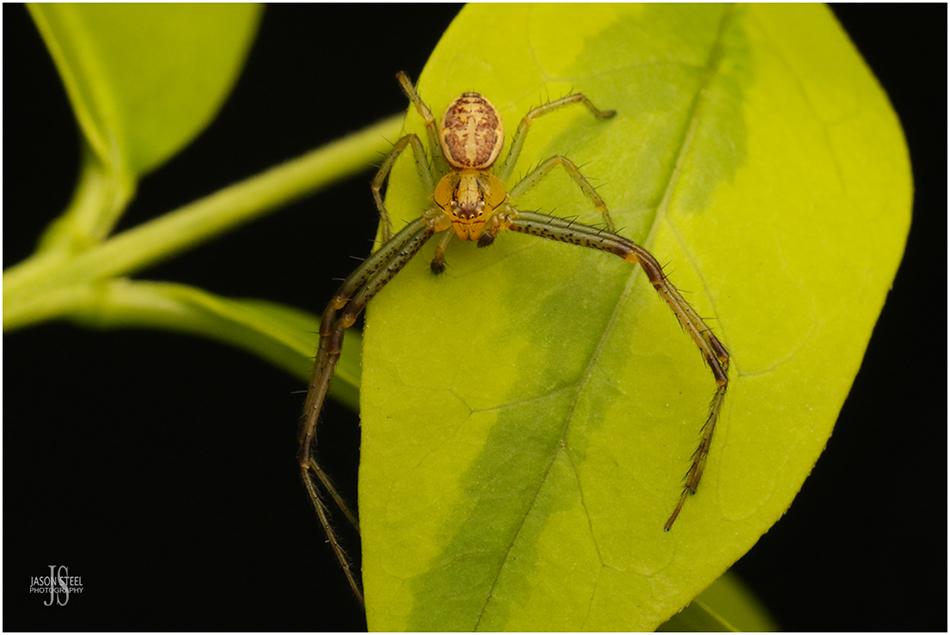
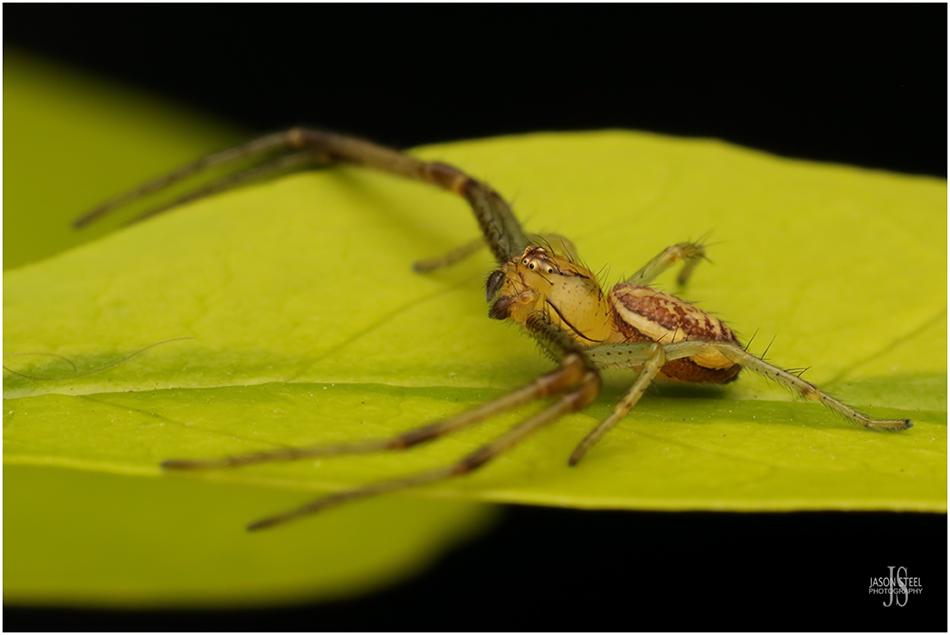
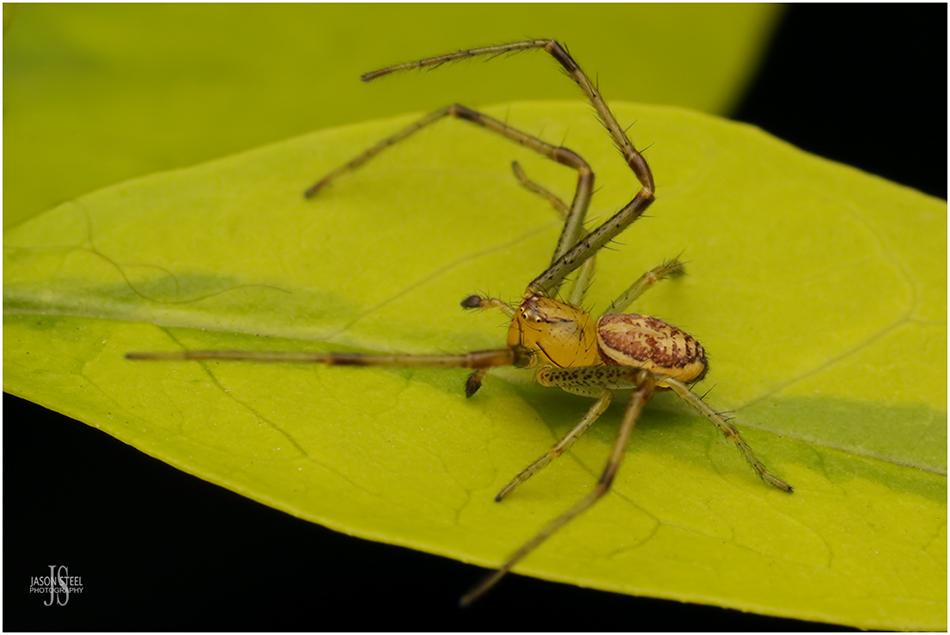
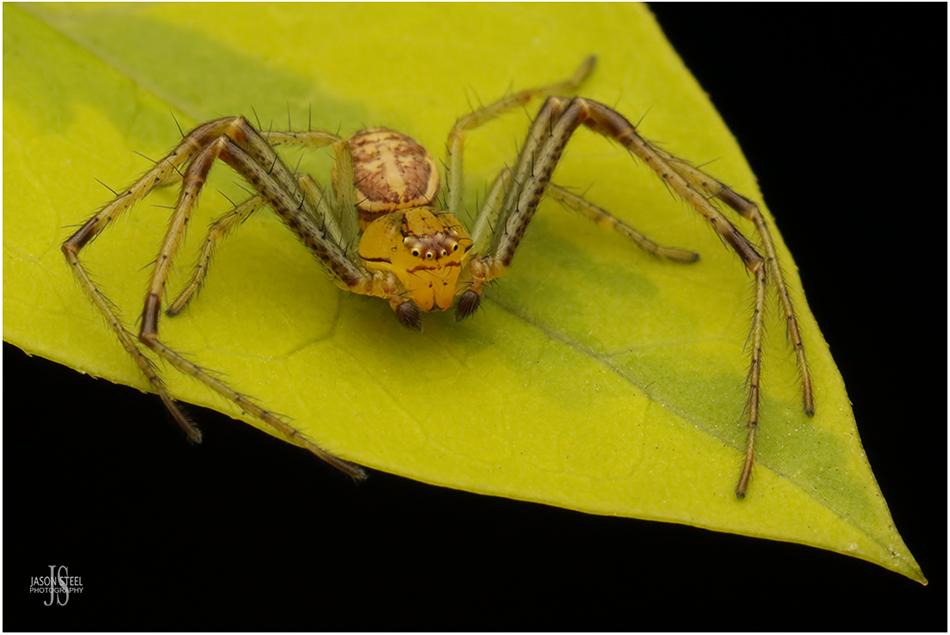
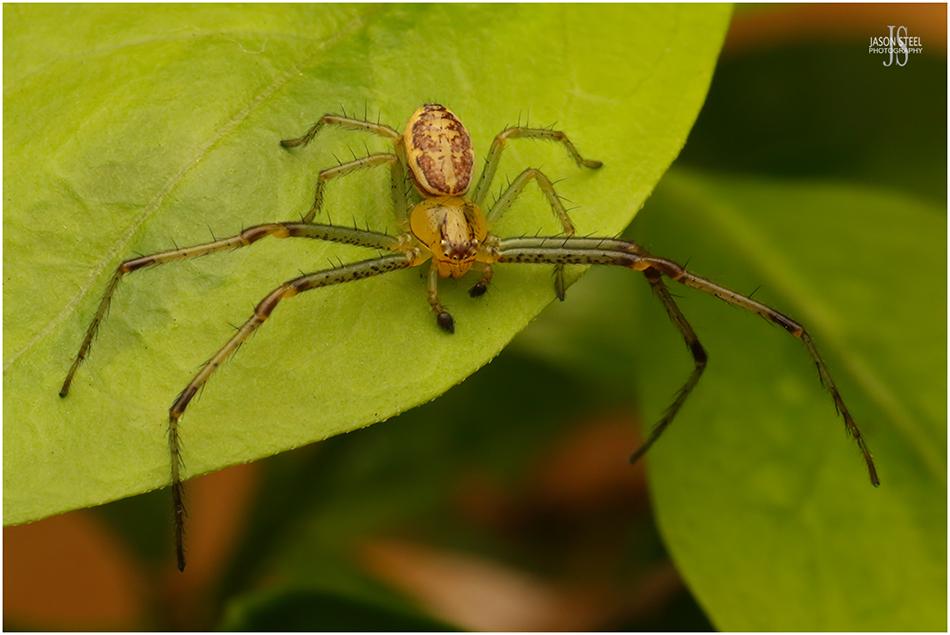
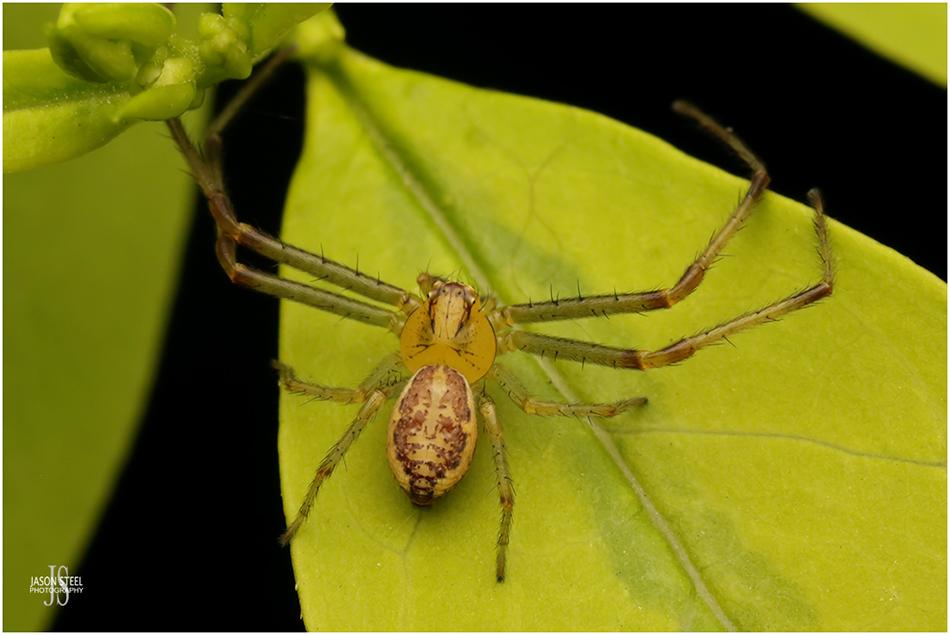
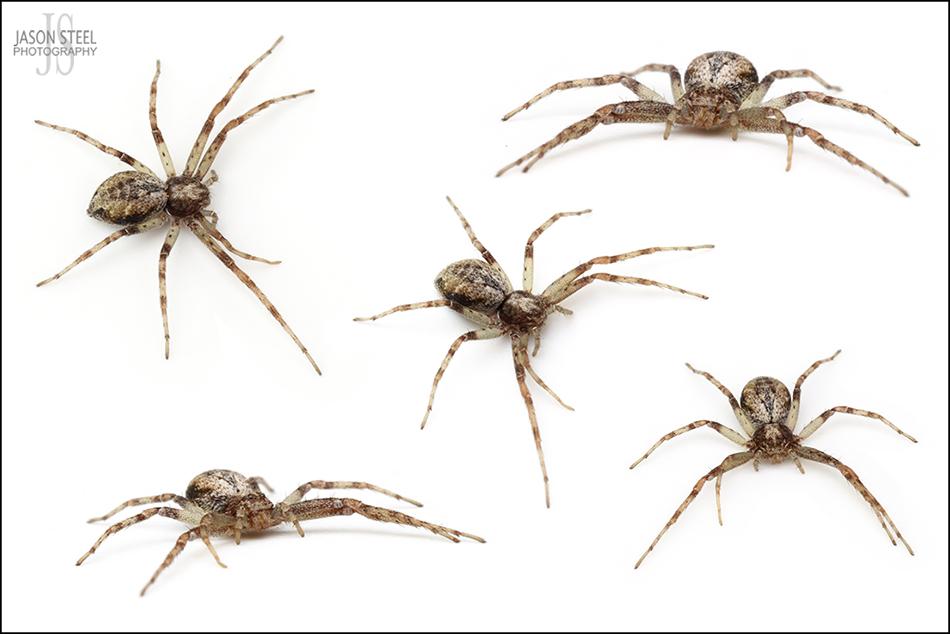
Turf Running Spider (Philodromus cespitum)
Turf Running Spider (Philodromus cespitum)
Spiders from the group "Philodromus" are Running Crab Spiders, and not true Crab Spiders. They do have similar eye and leg arrangements though. With true Crab Spiders the first pair of legs are the longest. With Running Crab Spiders it is the second pair of legs that are the longest, and this second pair are noticeably longer than the first pair.
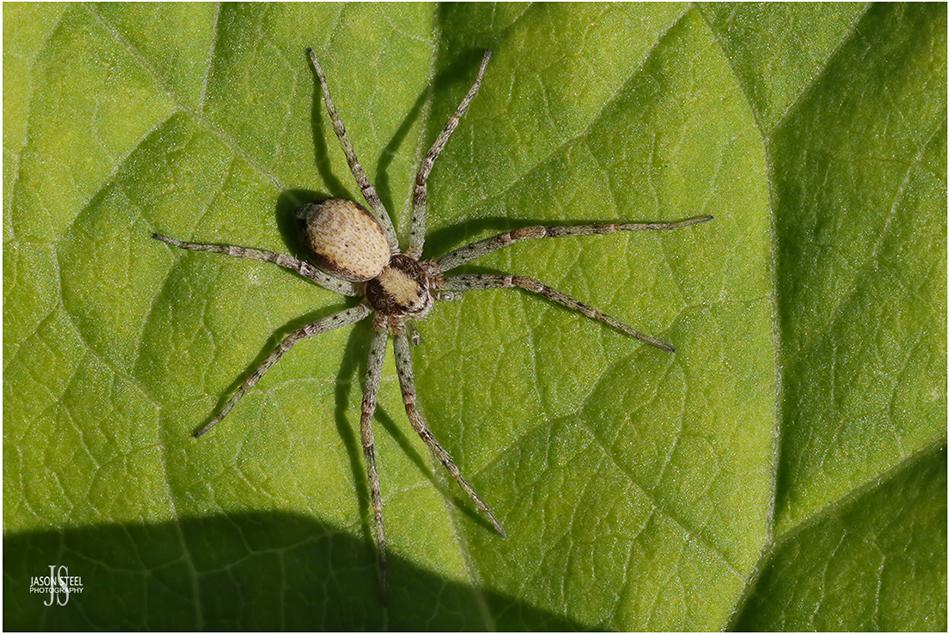
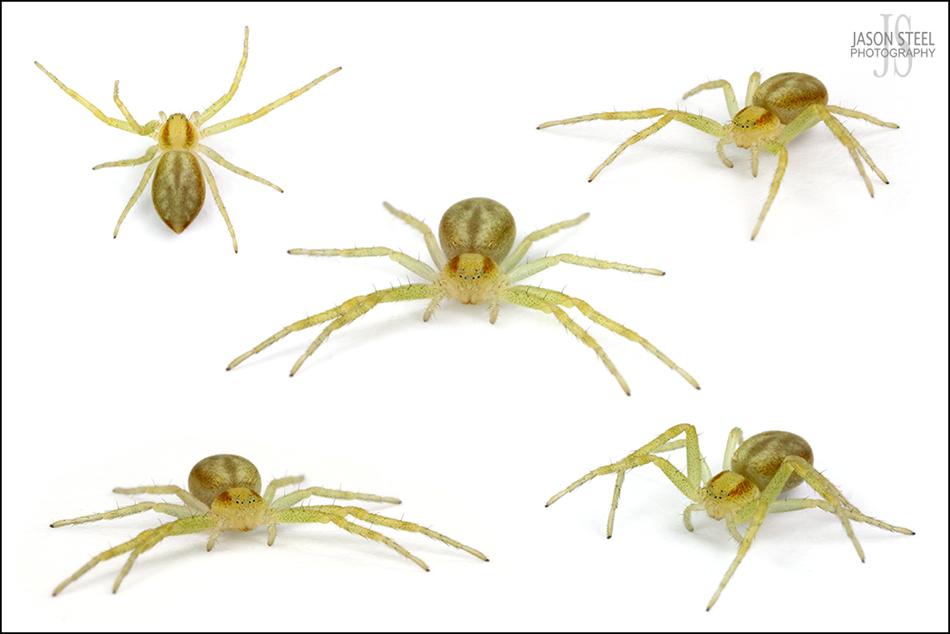
Female 5mm Running Crab Spider (Philodromus cf albidus)
Running Crab Spider (Philodromus cf albidus)
Philodromus albidus is another common and widespread small Running Crab Spider from the group Philodromus. This species has a body-length of just 3.5-5mm for females and 3-3.5mm for males. Philodromus albidus and Philodromus rufus can look very similar and need microscopic examination to be 100% sure of identification. Philodromus albidus is common and widespread in the southern half of England, whilst Philodromus rufus is rare and confined to the SE of England. Philodromus albidus is ty[ically found on the lower branches of broad-leaved trees. I have also found it on small bushes and ivy-covered fences in my SE London garden.
When species cannot be 100% positively identified, it is common practice to add "cf" in the middle of the Latin name to indicate that whilst the name given is highly likely it cannot be guaranteed without microscopic examination and comparison to other closely related species of the genus.
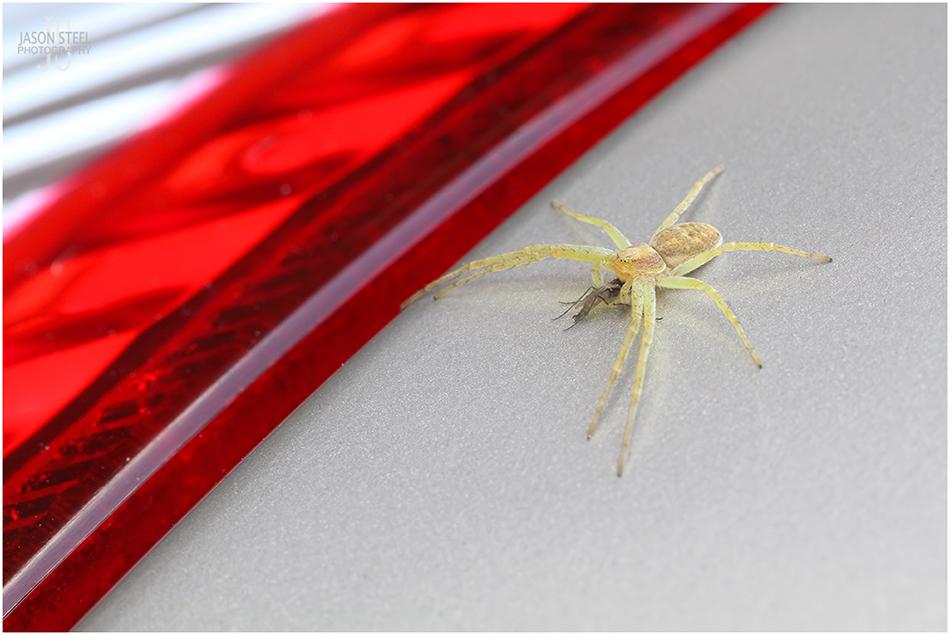
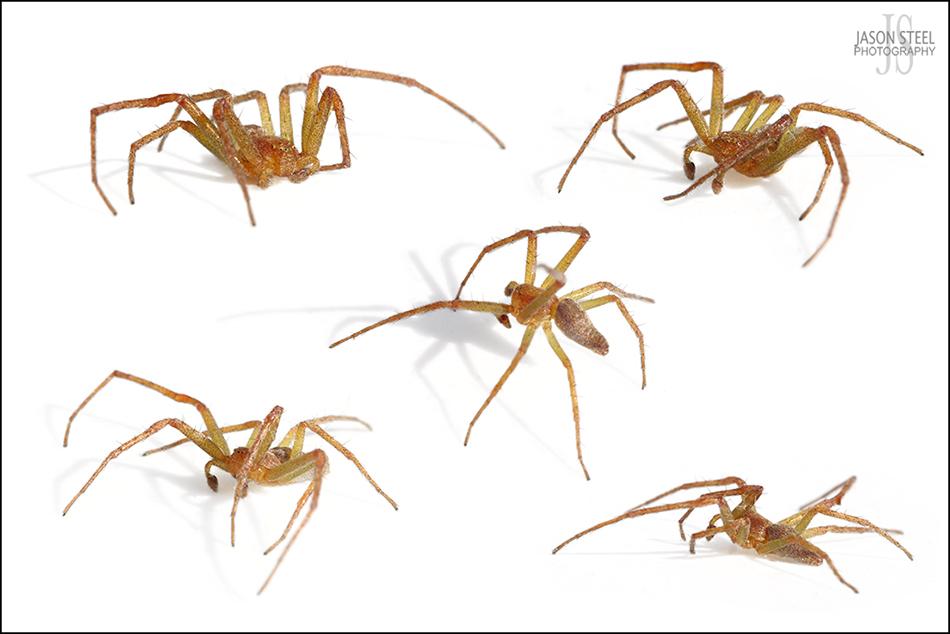
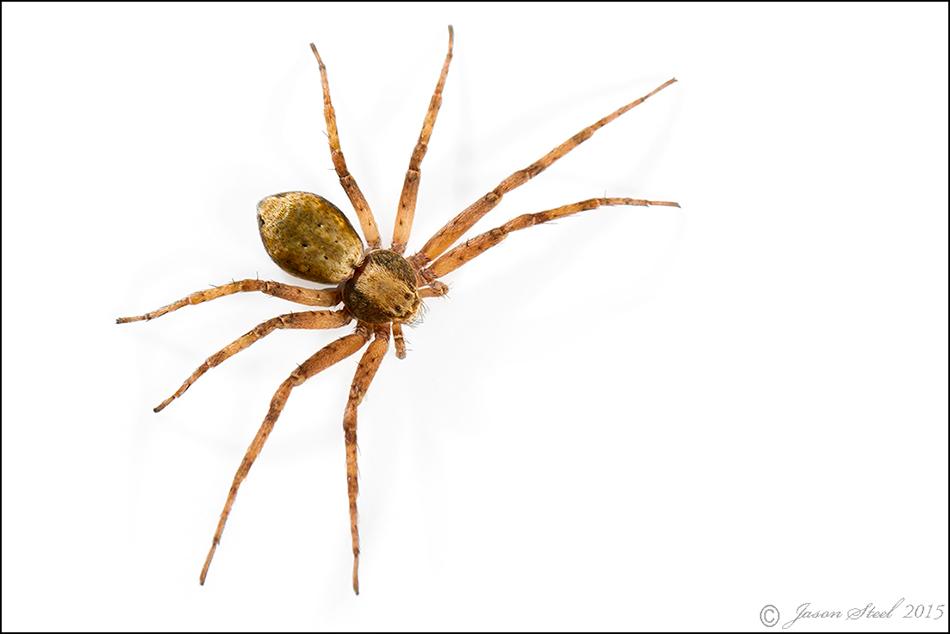
5mm adult female House Crab Spider (Philodromus dispar)
House Crab Spider (Philodromus dispar)
Another small and frequently encountered Running Crab Spider in England & Wales with a body length of 4-5mm for both sexes. Found in a variety of habitats especially low vegetation and bushes. They are also found in homes on occasion. The female is variable in colour but usually brown-yellow.
Mature males are quite distinctive and have a dark upper body & head and white, or light coloured, legs and underside. Mature males are sometimes referred to as the "Tuxedo Spider". Females are a little harder to separate from other Running Crab Spiders but can be identified by the disparity of colouration between the upper and lower colours on the abdomen. The upper colouration of the abdomen is boldly separated from the lower colouration and the two colours never fade into each other. LINK
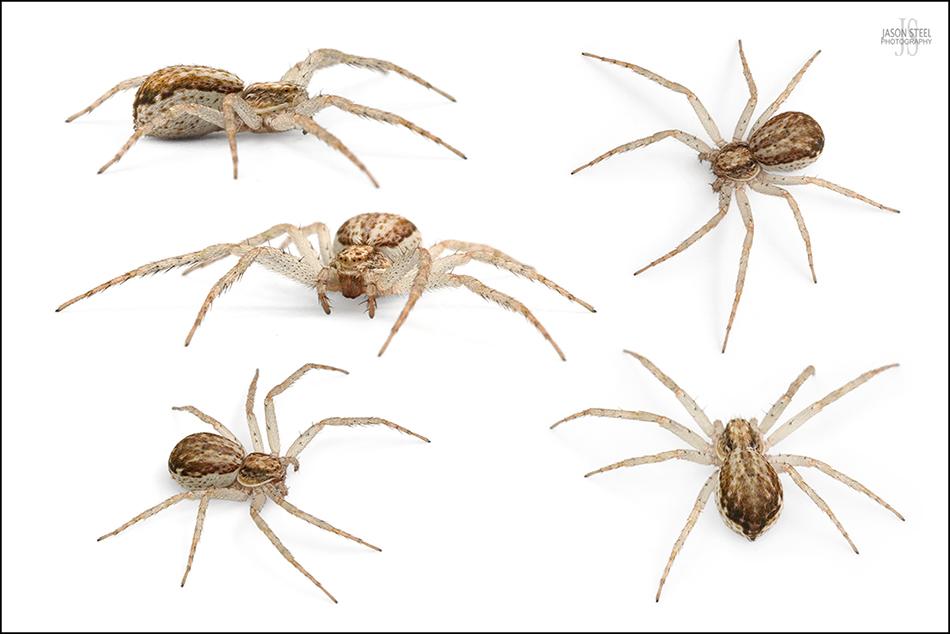
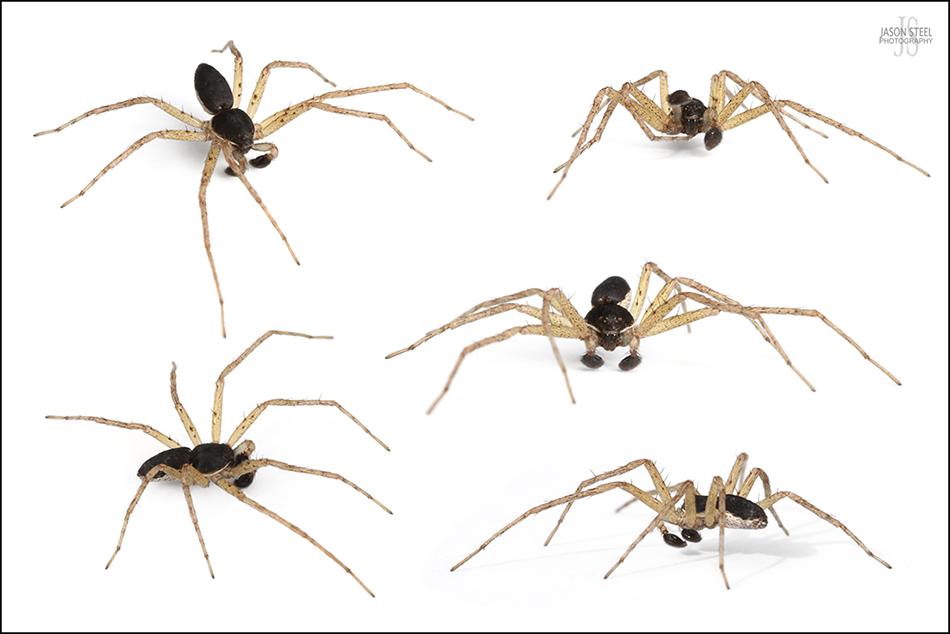
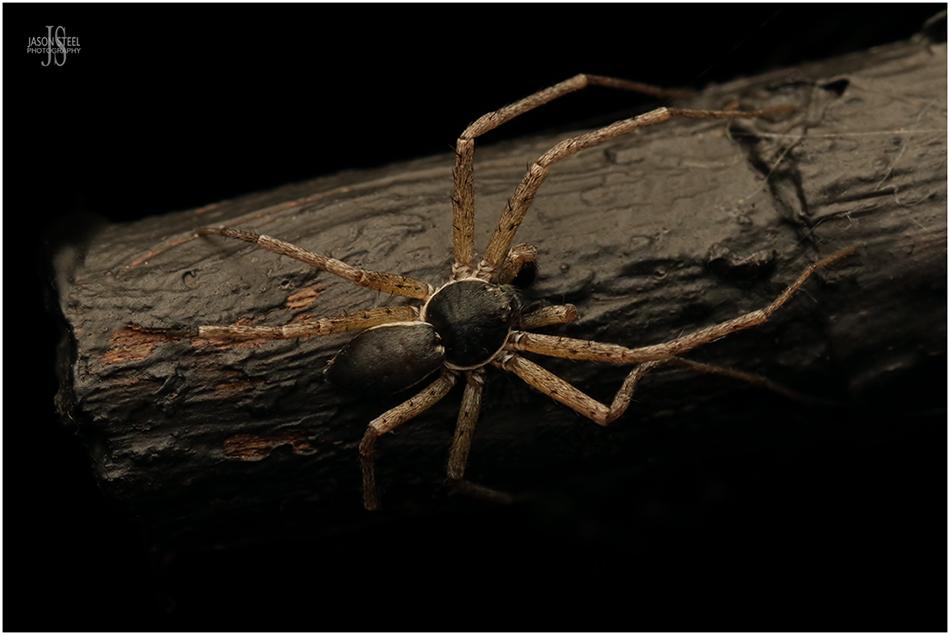
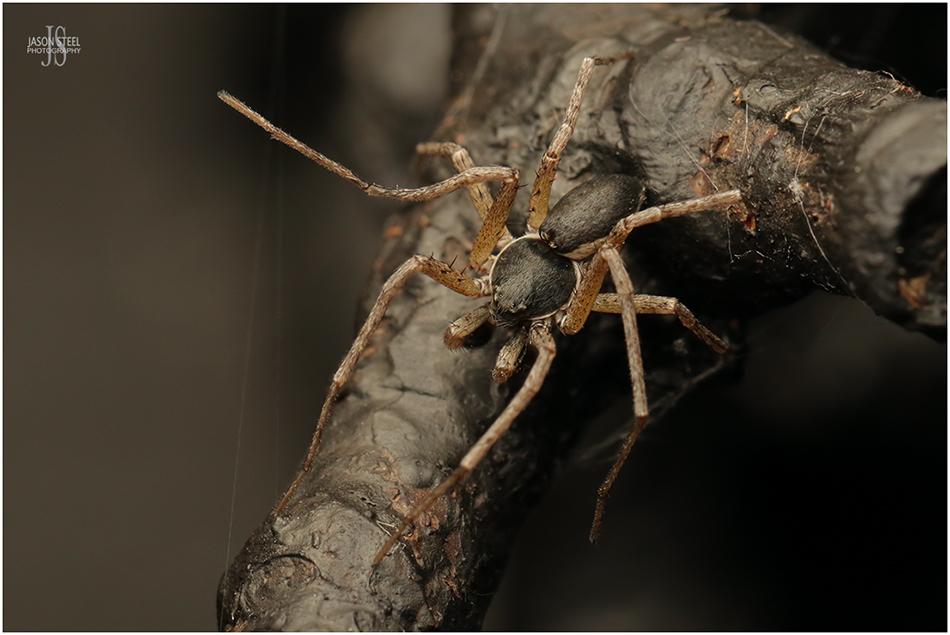
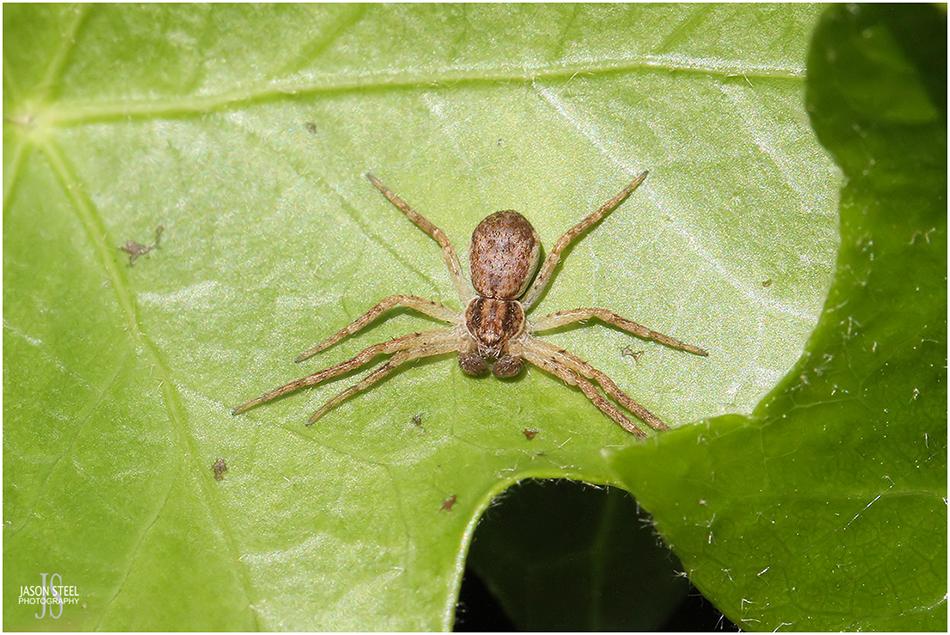
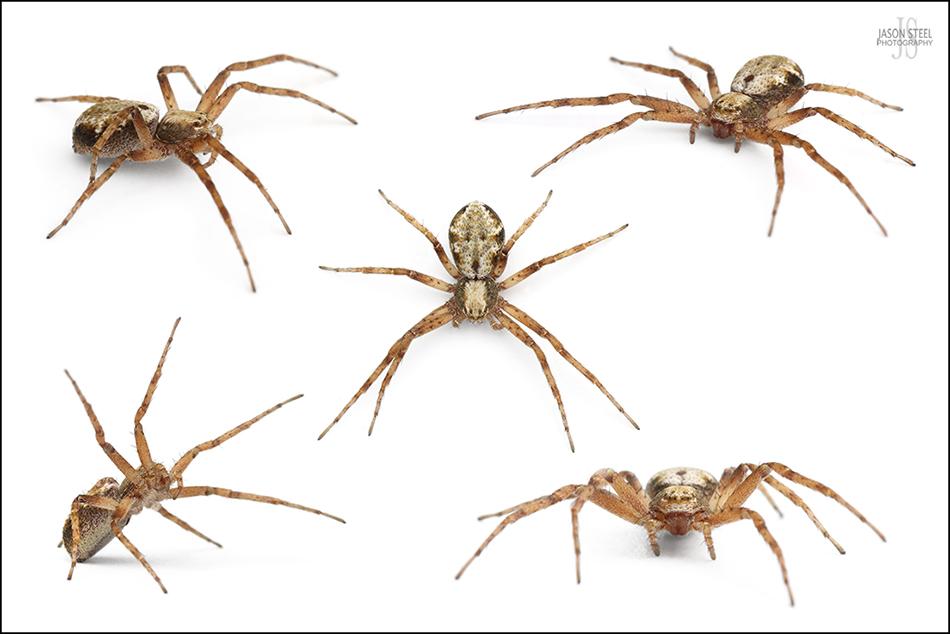
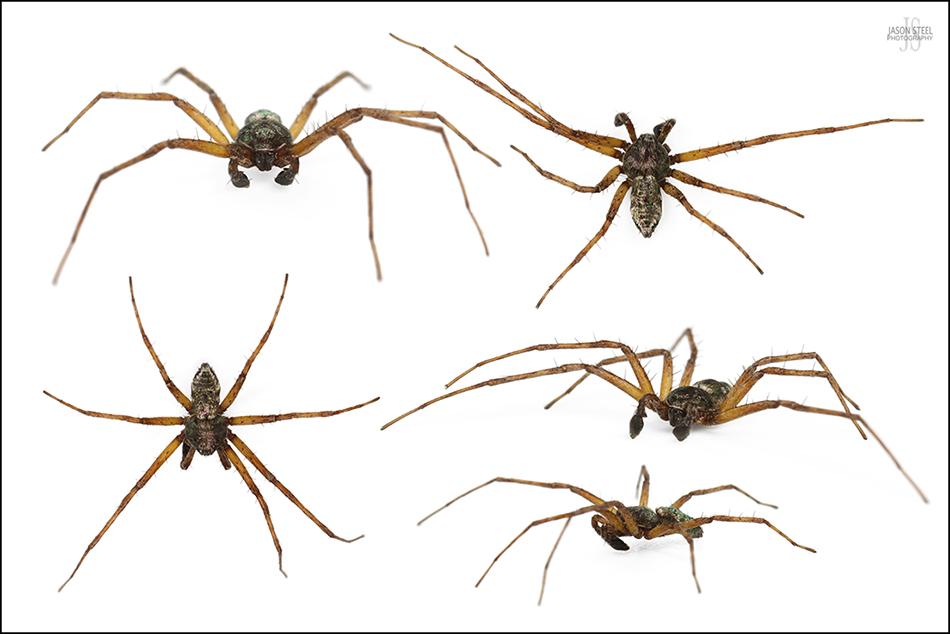
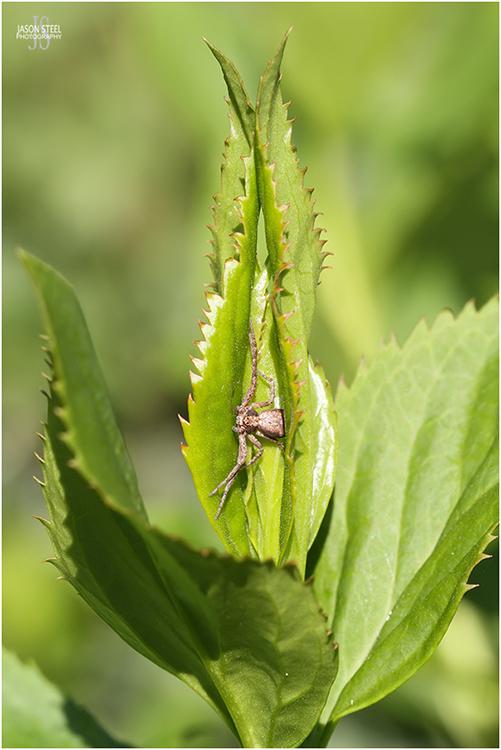
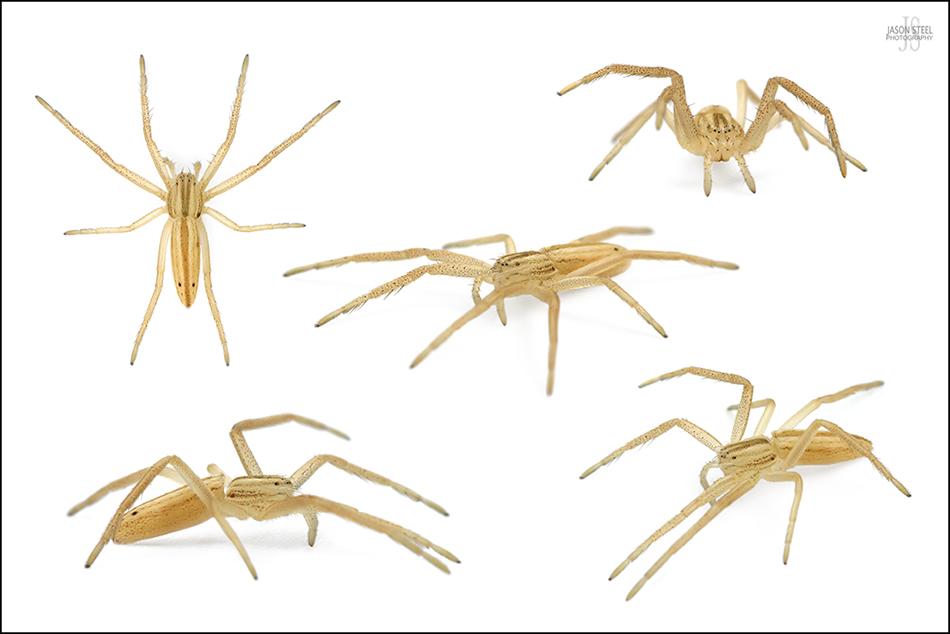
Grass Spider (Tibellus cf oblongus) found in long grass on Swanscombe Marshes, Kent 16th August 2020.
Grass Spider / Slender Running Spider - (Tibellus oblongus)
The Grass Spider is a member of the Running Crab Spider family although with its long slender abdomen if differs in appearance considerably from other species of Running Crab Spider and is pretty easy to identify in the field. Adult males grow to around 7-8mm in body-length whilst the females grow to 8-10mm. They are fairly common throughout the UK but are more often encountered in Southern England from May until September. Although Grass Spiders can be found in a variety of habitats they have a preference for tall grass as their name suggests. The Grass Spider is an ambush predator and waits at the top of vegetation for its prey to come within range. At rest the Grass Spider often lays flat with its legs stretched out in front and back, similar to the Wide-Jawed Orb-Weaver, and is excellently camouflaged amongst dry grass in the summer. Egg-sacs are laid at the top of vegetation and are guarded by the female. Other common names include the Grass-Blade Spider and the Slender Crab Spider.
The Tibellus genus has two species in the UK which are indistinguishable without microscopic examination of the genitalia. Both are found in a variety of habitats including damp fields and meadows, but Tibellus maritimus seems to have a preference for coastal sites. Tibellus oblongus is the more common and widespread of the two species.
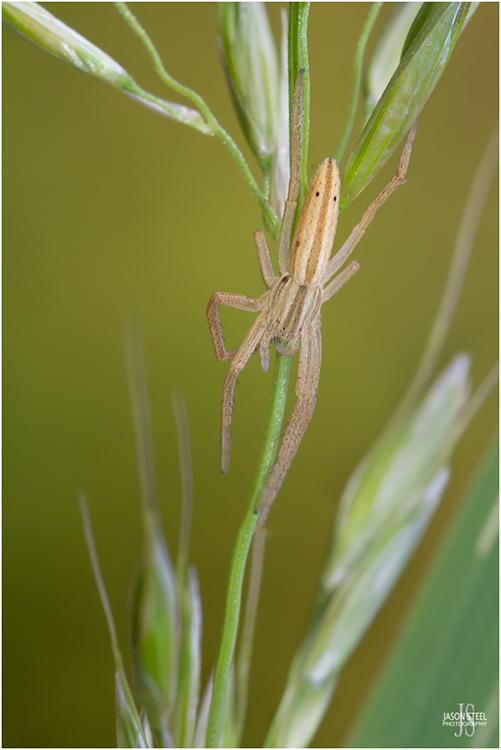
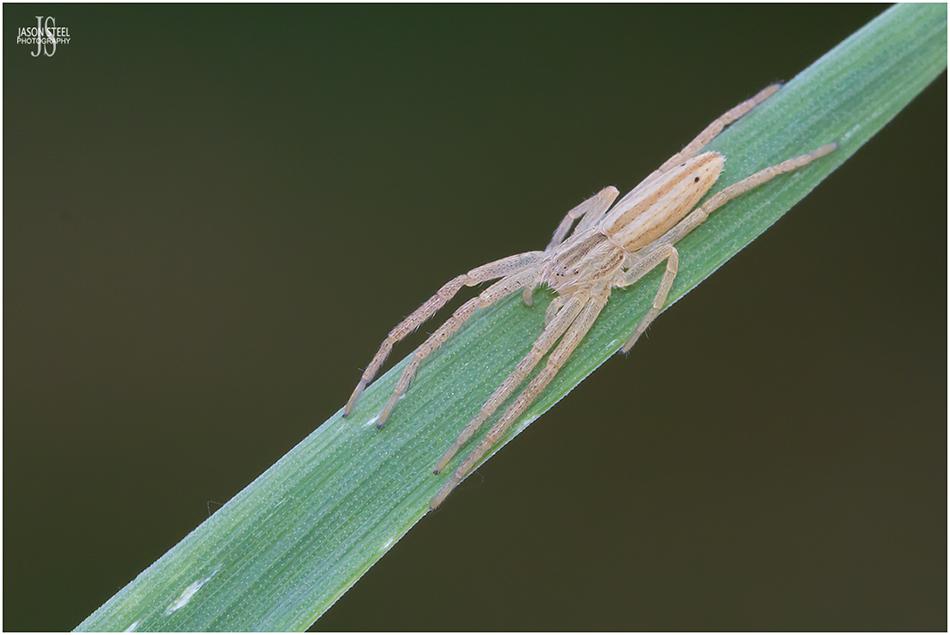
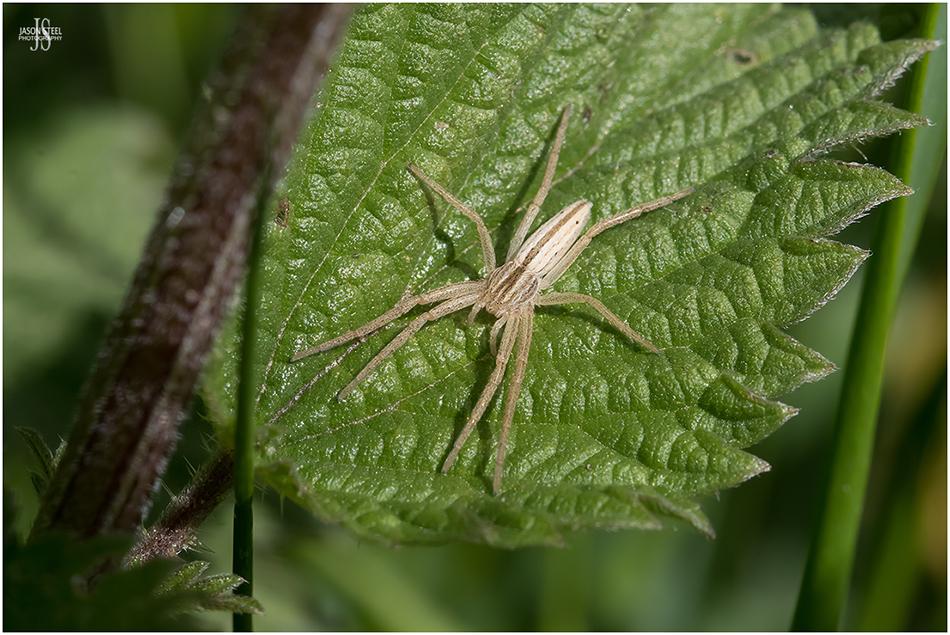
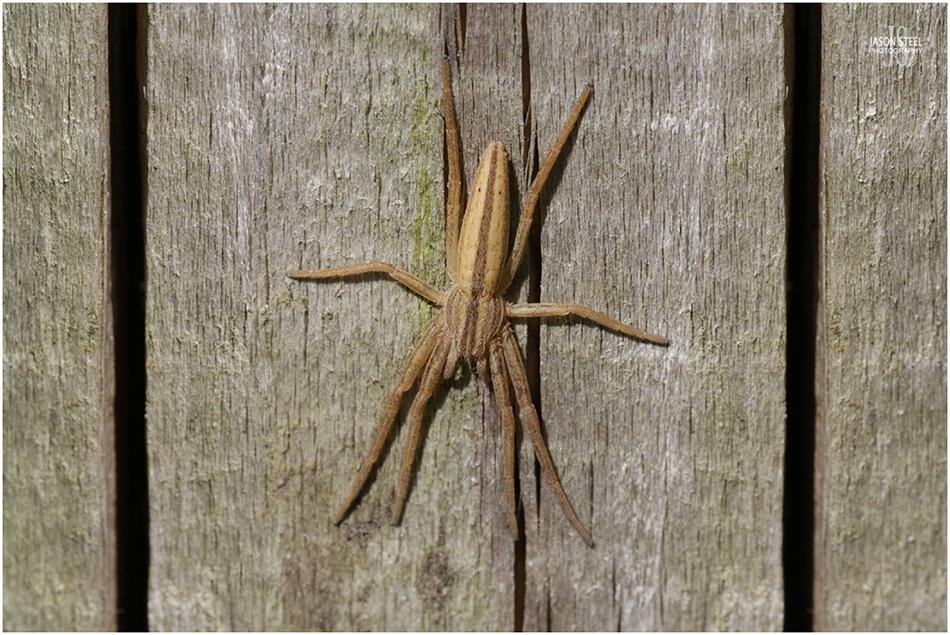
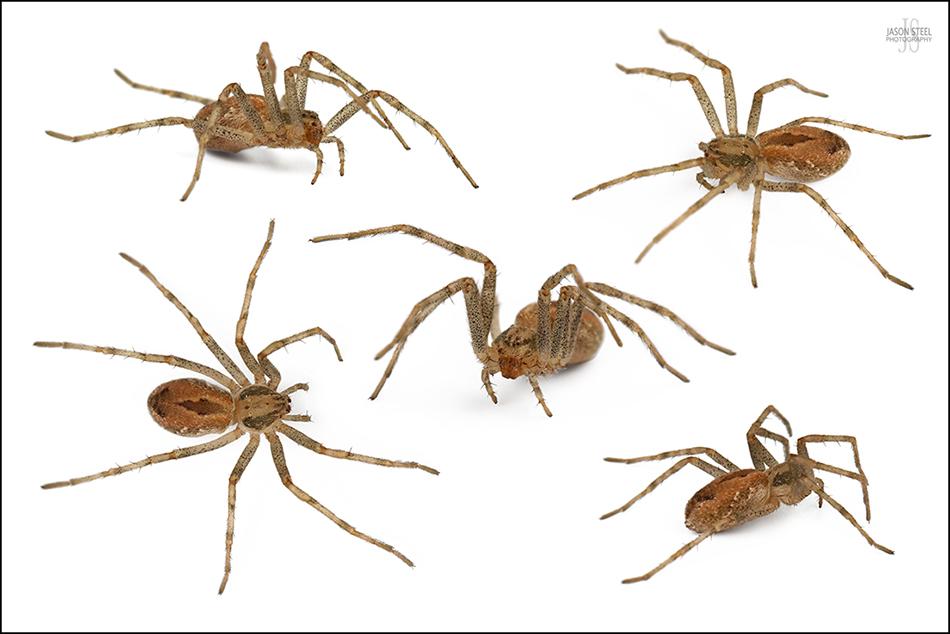
Cricket-Thief Spider (Thanatus vulgaris) found as a stowaway amidst imported crickets, June 2021.
Cricket-Thief Spider - (Thanatus vulgaris)
The Cricket-Thief Spider is a non-native species of Running Crab Spider, in the family Philodromidae, that is regularly found as a stowaway amidst imported crickets and locusts supplied to the exotic pet trade. As its name suggests this spider feeds on other invertebrates, with a preference for crickets and grasshoppers, and in its native range is usually found on low vegetation in areas of long grass. In the UK it is very rare to find this species outdoors in the wild as it prefers a warmer and drier habitat. It has occasionally been spotted outdoors here since 1992 but most UK sightings occur in pet shops or by exotic pet owners. The Cricket-Thief Spider is native to much of Europe, Asia and North America. Adult females typically reach a body-length of around 6-9mm whilst the smaller males reach around 4-6mm. This spider is primarily nocturnal and usually hides away during the daytime and hunts at night.
* I'd like to say a huge thank you to Vicky Butterfield-Reffin for kindly sending this specimen to me so it could be cared for and added to my website. *
